Photography by James Vincent
Childhood recollections of Ski Sunday had me expecting to find Innsbruck a collection of unsightly concrete buildings, a deserted winter playground repurposed for a spot of tourist season extending summer cycling. I couldn’t have been more wrong.
Old Meets New
Situated high in the mountains of Austria, but just 45 minutes from Switzerland, Germany and Italy, Innsbruck is a small city full of character and culture – a far cry from apres ski posing and schnapps fuelled excess. This is a real place – a city that traces its heritage back for centuries to Roman times, from where its name Oeni Pons (meaning bridge over the Inn) can be traced. It has a well regarded university whose students add another 30,000 to the city’s 100,000 population. Between its proximity to Italy, Germany and Switzerland and its student population, it’s a cosmopolitan place where historic buildings and narrow old town streets sit cheek by jowl with contemporary architecture in a visually engaging mix of styles.
It seems the city’s planning department is adventurous. Zaha Hadid, the architect whose swooping geometric designs were sometimes too extravagant to make it past the conceptual stage, designed both the Bergisel Ski Jump and the Nordkette Funicular stations. But it’s not just the internationally acclaimed architects who are being let loose in Innsbruck – there’s barely a boring modern building in sight, with every one having interesting and distinct features from the next. Polished concrete curves, modern cubes of glass, metal and planted walls, coloured renders, renaissance frills, even a golden roof. It’s all there, making Innsbruck a destination that might have a visiting mountain biker half hoping they spanner themselves on the first run, giving them an excuse to explore all that this city has to offer.
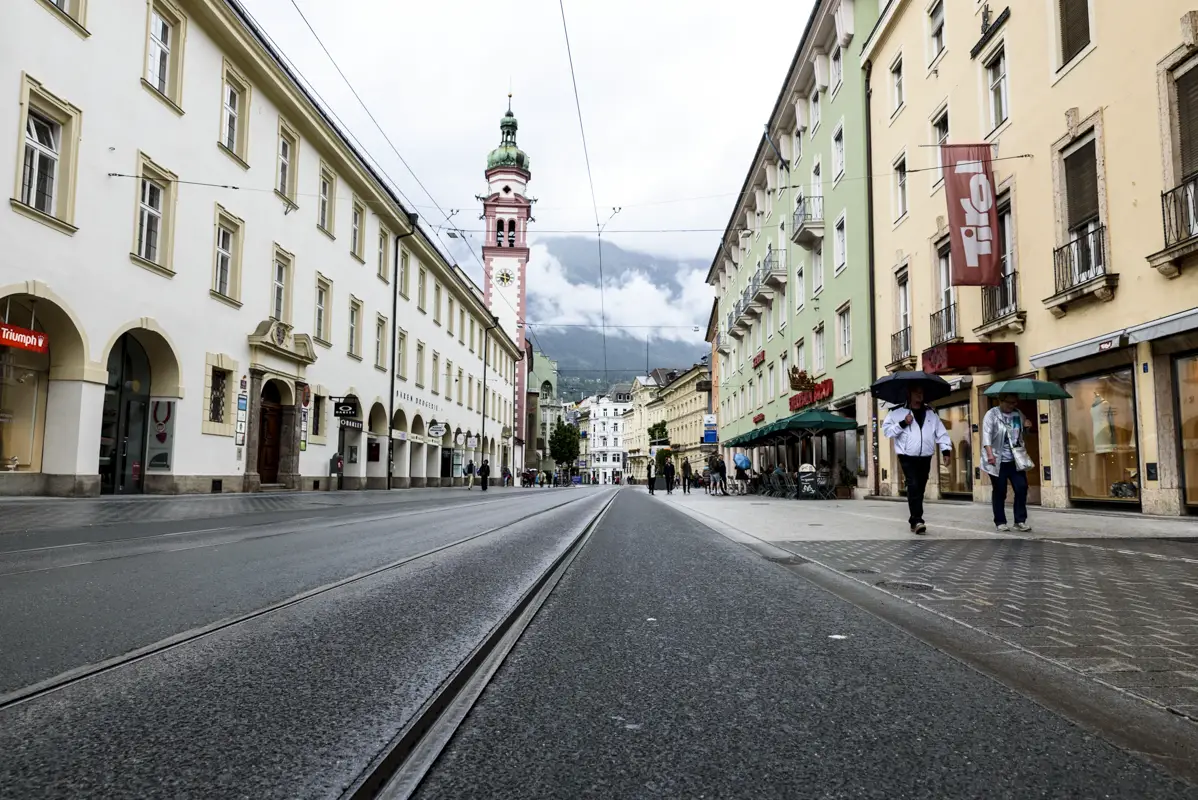
Action On The Doorstep
Perhaps as you’re sitting out on one of the many pavements cafes having a coffee, or a beer, you’ll look up and glimpse the mountains. You could head along to one of the outdoor stores and start buying supplies for an epic adventure to some far flung rocky peak. Far easier however, is to hop on the various buses, trams, funiculars and gondolas, and in just half an hour or so you can be up in the alpine zone looking down on that cluster of coloured buildings where your empty drinking vessel is probably only just making it through the dishwasher.
Innsbruckers appear fairly obsessed with this playground on their doorstep. Hiking, skiing, climbing, canyoning, kayaking and cycling – it’s a wonder any of the students turn up to lectures. The city’s residents look fit for all this activity – our guide Monika happily strolls up the many steps to the Bergisel ski jump, while two of us attempt to run up it. Two steps at a time rapidly changes down to single steps of gentler running, then jogging, then something approaching power walking. Us two step climbers arrive to meet the funicular travellers in a lather of sweat and gasping for breath. Monika appears behind us only moments later, unruffled by the stroll up. Fancying ourselves as fit mountain biking outdoor types, it’s a bit of an embarrassment to find a blazer and chino clad handsome woman of a certain age making mincemeat of us.
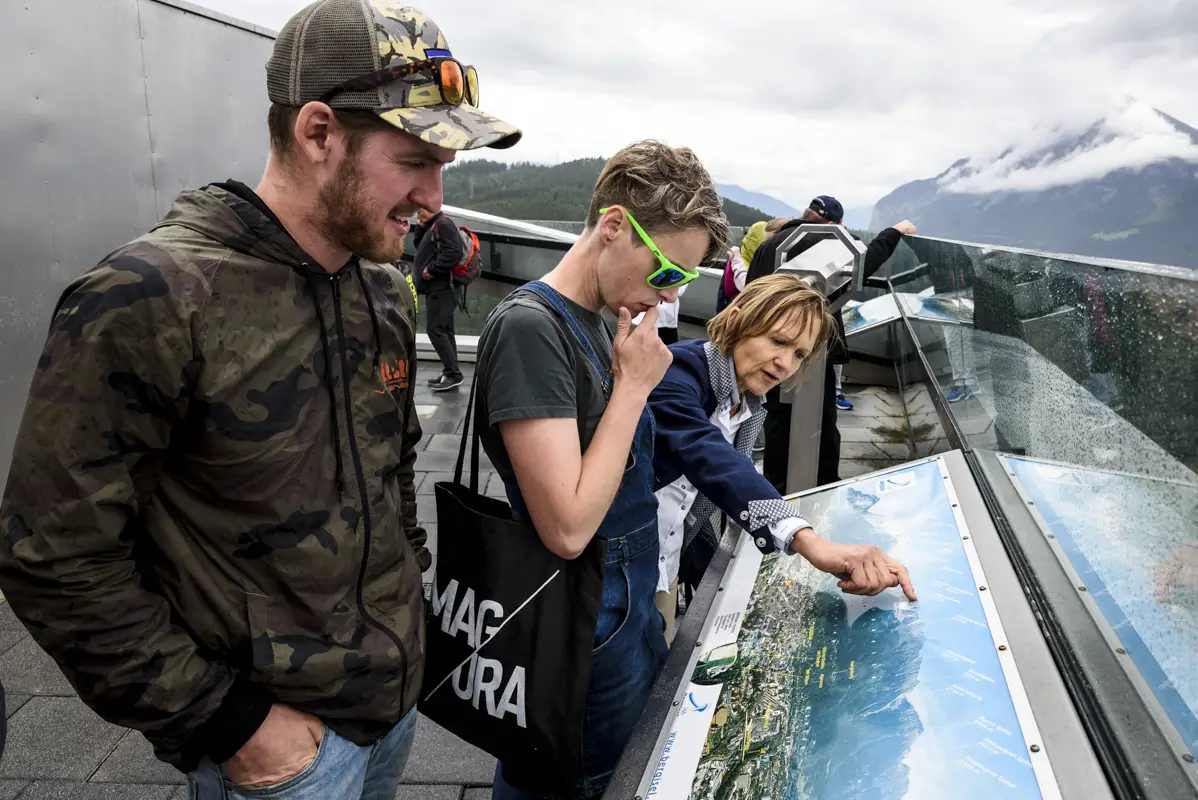
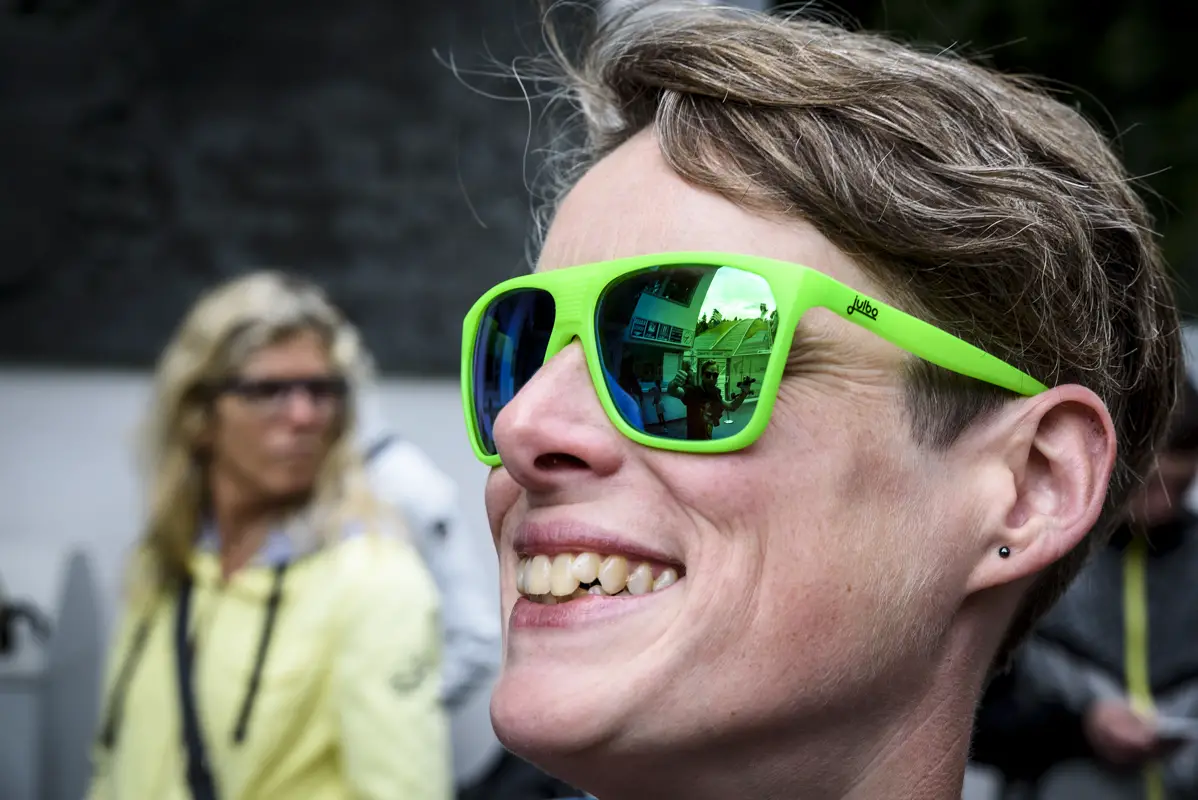
It’s not just the two step climbers with quivering legs as we shuffle out onto a viewing point to watch a ski jumper prepare to plummet down the slope that many of us will recognise from Winter Olympics coverage. It’s one of the only ones in the world that can be used in both summer and winter, so top flight ski jumpers are often to be found here taking advantage of the training opportunity. As he zips up his onesie and vanishes down the slope and out of view (the landing spot is hidden by the angle of the slope, so you can’t see where you’re aiming for. As if that wasn’t terrifying enough, what you can see from the top is the city’s graveyard), we begin to think that our trail riding efforts were perhaps not as epic or death defying as we were giving ourselves credit for.
Mountain biking is a relatively recent addition to the menu of outdoor activities – in many parts of Austria it is illegal to ride almost anywhere off road. However, in the Tirol – the region where Innsbruck sits – local laws have been made to allow bikes to be ridden on selected trails. While other riders we meet speak of local guides who show them trails outside this official selection, we restrict ourselves to the approved stuff – and it’s enough of a handful to keep us busy for the days we are there.
Having won a bid to host Crankworx, the Innsbruck Tourist Board has set about publicising the area as a riding destination. There are a number of hotels geared up to the needs of mountain bikers – ours has a bike wash and deluxe bike store, complete with workshop area and bike themed decor. There are a number of gravel roads which the cross country crew appear to find an entertaining challenge. The short sections we ride are more than enough to convince us that this holds appeal for a certain sort of rider – incredibly fit ones with a resting pulse of 42 perhaps – and we are happy to count ourselves out of this group.
Nordkette Singletrail
Trail riders then – that must be us. We take the gondola up to the Nordkette Singletrail. Promising 1,030m of descent in just 4.2km, it sounds amazing. Except that our guide Dominik thinks that we don’t stand a chance on hardtails, no matter how long and slack they may be. ‘It’s an S4 grade’ says Dominik, ‘Trail grades apply to hiking trails too, they start at S1, and S5 is unrideable’.
Indeed, within a few short metres two of us are doing a gnarly cyclocross course, carrying and pushing our bikes down rocky switchbacks. Some sections are more rideable, and for these we hop back on and pick our way down until the next big feature has us pushing again. There are no chicken lines – this is an uncompromising but very natural black run by UK standards – more akin to a downhill trail than any black run at a UK trail centre. Indeed, some of it is sufficiently technical that we don’t even get to see it, as Dominik guides us to trails more suited to our hardtails and abilities. For James, our Lake District based photographer on a 160mm full suspension bike, the terrain appears less alien, albeit that the steep descents go on for longer – much longer. Had he not been required to stop and take photographs of us hardtail tip-toers, he would have been happy to do vertiginous laps until his arms and legs wobbled and his brake rotors glowed. Indeed, all of our travelling band think that we might need to come back, with bigger bikes, and more time, and maybe (entirely coincidentally, of course) at the same time as the Nordkette electronic musical festival that is held on the side of the mountain.
The precipitous and switchback embracing nature of the Nordkette is due to the fact that the trail must fit into the narrow strip of land under the gondola cables – this being the land that is publicly owned. On the lower slopes the gradient eases up a little, although the Arzler Alm trail is still plenty challenging, clinging its way to the side of the hill through trees. It’s less rocky than the Nordkette, but you’ll likely find yourself wondering how the trail builders stayed stood up as they fixed logs into the side of the trail to create sufficient flat ground to constitute a trail. From the ends of the Arzler Alm and Norkette you can opt to take the gondola up for another run, or you can take the community built Hungerburg trail right into the city. It’s a swoopier trail than the Nordkette and Arzler Alm, more along the lines of an easy red trail in the UK. That said, the builders seem to have a passion for surprise gap jumps and precipitous chicken lines, so keep your wits about you when there are two route options, and choose wisely.
If you’ve booked accommodation in the city, you could easily pedal right back there through the network of streets – there are a fair number of cycle lanes, including a very pleasant riverside path, and there are plenty of people who use bikes to get around the city (despite the steep hills outside the centre – seeing elderly people on 9-speed shopper bikes pedalling their way up the hillsides really puts the UK utility cycling levels to shame). Bikes are allowed on the Nordkette Funicular, better known to locals as the Hungerburgbahn, but you have to get on at the first stop in town, the Station Congress, and not the stations part way up. You also need a relatively clean bike, although you’ll find plenty of bike wash facilities around if you need them, including one at the Station Congress itself. The whole set up feels distinctly futuristic, and you’ll likely find yourself thinking that London’s new Crossrail link seems distinctly unambitious as you zip swiftly straight up the side of the mountain, past Zaha Hadid’s swooping station roofs designed to look like the glaciers that grace the surrounding mountains.
Bikepark Innsbruck
On the other side of town, above the main Crankworx dual slope and style course (which is to be kept, but with some of the bigger features removed), is Bikepark Innsbruck. Here the ‘Crazy Family Trail’ is likely to take unsuspecting UK families by surprise – while it is graded as S2, its steep sections and many roots would likely make it a solid red route in the UK.
Back and forth under the gondola and in and out of the trees, the CFT is gentler than the Nordkette – gone are the big rocks, instead replaced by loam, roots, and alpine meadow sections. It may not be the easiest of trails compared to what the UK has to offer, but this is no barrier to locals. We are there on a Saturday, and the trail is busy with families and groups of young kids aged around 10 or 11. We are put to shame – yes, most of the youngest riders are wearing full face helmets and knee protection, but with their tiny wheels and rigid frames they are making our rather mincing efforts on hardtails look a bit rubbish.
The CFT leads into the ‘Braking Distance’ trail, which swoops 2.5km and 300m of descent down through alpine meadows and spits us out back at the gondola in the bike park car park, so we head straight back up to the top. It’s lunch time and the Mutterer Alm alpine hut/restaurant there is heaving with riders and families enjoying the hospitality. As well as the CFT, there’s a small children’s skills trail, a drift trike hire and track, adventure playground, and a band on a stage providing children’s entertainment. We have no idea what the words are, but we join in with the children making animal noises at appropriate intervals. There’s enough to do there to keep the kids happy, so that a family could probably take it turns to have a run down the trail on the bike, if the kids are not yet ready to tackle the trail themselves.
As we visit, proposals for a new ‘Flow Trail’ have cleared all the legal hurdles and the diggers will soon be moving in to provide 650m of descent over 7.4km. This is being designed by Whistler based Gravity Logic, a well respected trail company with a philosophy based around creating fun trails with heaps of flow. These trails can be ridden hard and fast by advanced riders, or more gently by beginners, making them a great investment with broad appeal. Trail building is due to start soon, with the trail opening late August or early September 2017.
The gondola up to the next trail head doesn’t open until the week after we’re there, so we push up the gravel double track to the start. It’s a slog – not the kind of thing you really want to be riding a trail bike up. Definitely lycra and XC bike territory for those slow pulsed racing snakes. Even if the gondola isn’t open, it’s worth making the push at least once so as to experience the swooping berms of Auerhan Trail (500m descent in 2.5km) that head through the alpine meadow, with a distant view of the city as a backdrop. This trail leads into where the Crankworx Whip Off took place, and while the rest of the trail is rollable, here there are a few small gap jumps for the unwary.
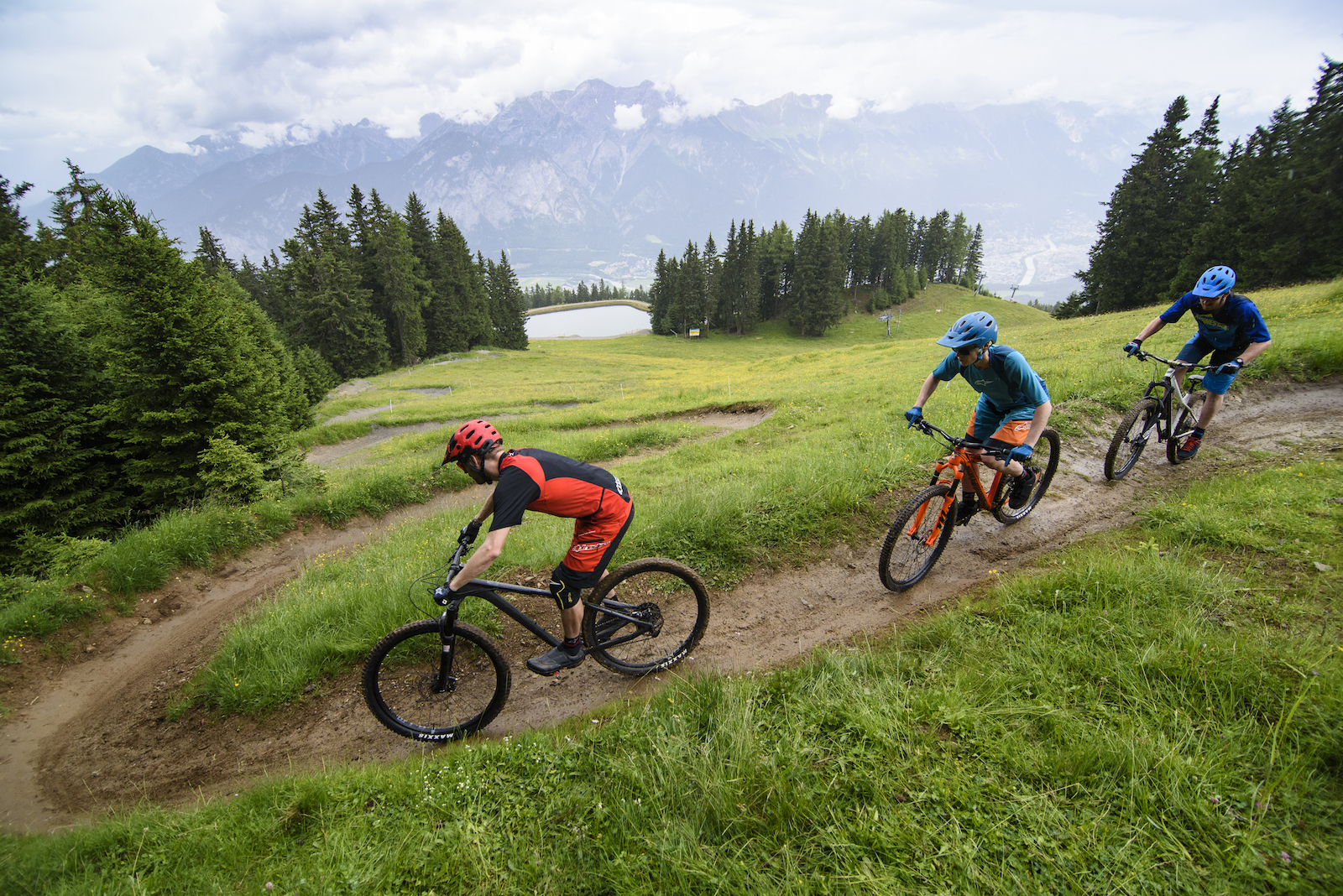
Further down the hill is the ‘Bulgarian Way’, used as the Crankworx Downhill trail, which took place the weekend before we visit. This is a huge helping of fun, despite showing the wear and tear of the previous week’s event. It’s rooty and loamy, and while the Kings and Queens of Downhill will clear the trail in just five or so minutes, at more mortal speeds this is a rollable steep trail with a great level of challenge. Rated as an S2, there are some steeper sections which are probably more akin to a British black grading than red, but these are short and pushing down them won’t feel too onerous if you don’t fancy riding them. That said, in truly wet weather the many roots and loam would surely push the technicality up a level. From the bottom of the 2km long trail (covering 400m of descent) you can ride along and up – so much up – to the main Bikepark carpark, or you can get the gondola back up the hill and ride down the gravel track to Mutterer Alm and the start of the Crazy Family Trail for a final run to the carpark. The hills are pretty brutal – the gondola option is recommended.
Much More To Ride
Other official trails exist around 40 minutes away from the city, but for the long weekend visitor there is likely to be enough fun to be had on these two sites within public transport reach of the City – even more so once the Flow Trail opens. For the holiday maker who wants to combine a bit of trail riding with more cultural, or other outdoor activities, there is easily enough for a week away. Even for the less energetically minded, it is possible to get a cable car up an extra 300m from where the Nordkette trail starts at the Seegrube to the Hafelekar. Here you can get the full panoramic view without expending further energy, or take the 20 minute hike up to the summit cross. For further adventure, the well equipped can head off for some serious hiking to a number of mountain huts.
Much More To See
If culture is your thing, there is a stunning array of live music and theatre to be seen: modern, classical, jazz, dance, ballet, electronica – the chances are you’ll find something to suit your tastes, and there are a number of festivals that the sufficiently organised might wish to consider when planning their trips. A weekend of jumping around to big beats, or taking in an opera, could easily be bookended by some adrenaline field bike riding.
With so many students in town, it’s possible to find places to eat and drink at any budget. On one night we eat at the oldest restaurant in town, Weisses Rossel, which serves a range of traditional foods in a characterful building, before moving on to a student bar where children play on balance bikes in the courtyard. As well as looking up to admire the buildings, it’s worth being nosy and sticking your head round the doors under the arches and peeking up the flights of stairs leading up from the streets. The buildings in the old town often have courtyards hidden inside them, and lots of hidden bars and cafes can be found up stairs or in these courtyards. For the best inside information, ask a student for tips on where to hang out.
If you fancy getting a bit more high brow than seeking out the finest beers and burgers in town, head to the historical sites of the Cathedral, the gothic Hofkirche which houses the tomb of Emperor Maximillian, or the Tirol Panorama and Kaiserjager Museum. This purpose built curved concrete wonder tells the story of the Tyrol, leading up to the Third Battle of the Bergisel. This successful battle against Napoleonic troops is depicted in a 1,000 square metre panoramic painting – the Tirol Panorama. Even if you’re no art buff, it’s worth seeing to behold the scale of it, and the use of natural light from above to light it and give it its realistic appearance is worth it for the ‘cor blimey get your head round that’ factor.
Indeed, Innsbruck as a whole takes a bit of getting your head around – there is so much to see and do, it is almost a shame to spend the entire time riding bikes down its surrounding slopes. We had just three days there to try and experience as much of it as possible. Despite barely being in our hotel long enough to do more than get changed and sleep, we all left feeling we could have done with at least twice that. Ah well, maybe there’ll be a next time? With trail bikes, of course.
Getting There
By Car
For those living in the south of England, a drive to Innsbruck will compare not too unfavourably with a drive north to the likes of Fort William. Certainly the road infrastructure is impressive, and while it’s just over 650 miles from Calais, the roads are wide, broadly quiet, and comfortable to drive on (even for the first time right hand side of the road driver in a right hand drive vehicle). If you are driving, it’s worth paying for the tolls in order to use the main routes, and don’t forget the kit requirements when driving in France: you need a breakdown kit, headlight and GB stickers, plus disposable breathalysers.
By Plane
Innsbruck does have its own airport and there are a limited number of direct flights from the UK. Alternatively, you can fly to Munich and get a train to Innsbruck.
Getting Around
Innsbruck is a public transport wonderland. There are buses with bike racks on the back, trams on which bikes are permitted, funiculars, bike lanes, and an enormous train station with trains heading to almost every conceivable corner of Europe. A taxi from the centre of town up to a hillside location such as Mutters, where we stayed, will cost between €15 and €20.
Bike City Card
If you want to use the gondolas or funicular up to the trails (and you are going to want to do this) you need a Bike City Card. This will give you access to all the uplifts to the trails in and around Innsbruck. A single day ticket costs €36, or €144 gets you a whole week of access.
Guiding and Bike Shops
If you’re planning on sticking to the trails of the Nordkette and Bikepark Innsbruck there’s not really any need for a guide, although you should keep your eyes peeled as some of the signage is not the most obvious – and look out for those surprise gap jumps.
There are a few bike shops, but you would do well to visit Die Borse in the city, where there are hire bikes of every persuasion, including e-MTBs, and a workshop where you can either fix your own bike or leave it to be fettled while you see some sights. Guiding can also be arranged here.
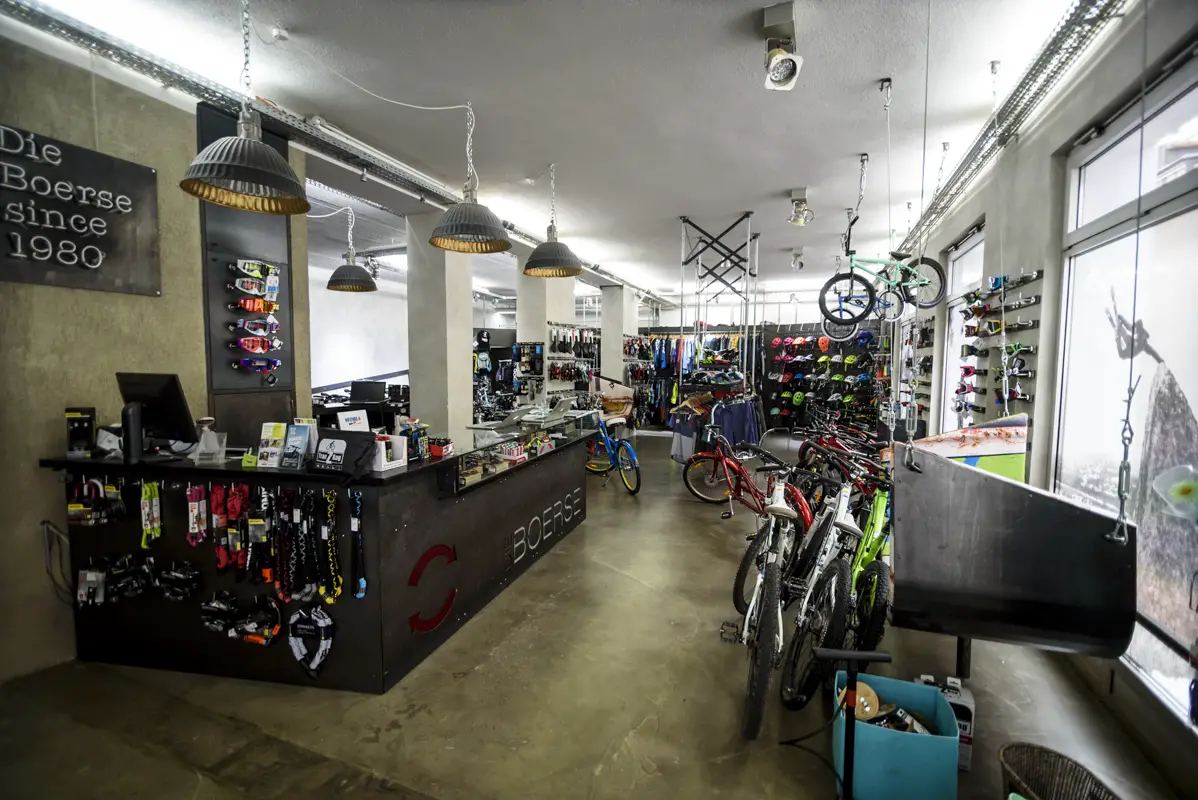
There is also a bike hire and bike shop at Bikecenter Mutteralm, at the main Bikepark Innsbruck car park.
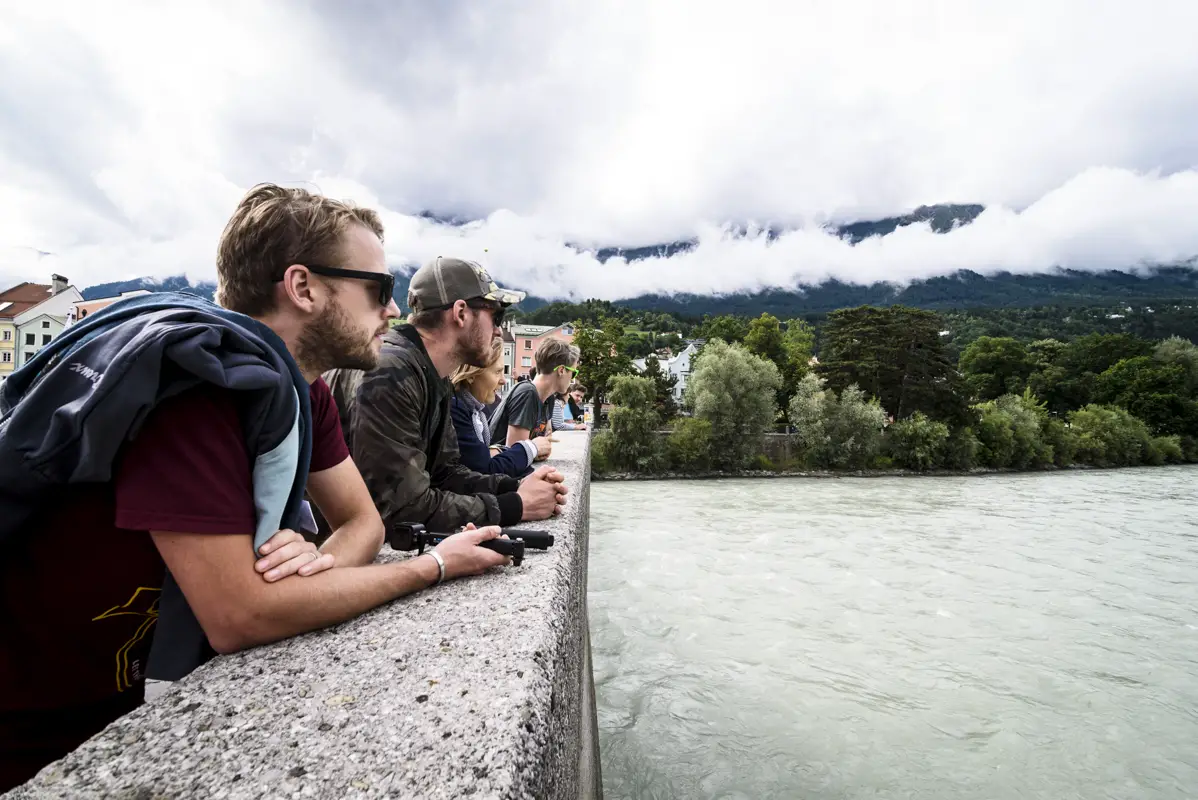
If you want to be sure of seeing all the sights of the city, then consider booking a tour with a guide, who will be able to show you round the many nooks and crannies of the city. We had a personal tour from Monika Unterholzner, with whom a two hour tour starts at €120. Regular group tours leave the tourist information at 2pm daily, and are available free with the Innsbruck Card, which also gives you a range of discounts at sights around the city.
Accommodation
There are plenty of accommodation options in Innsbruck and the villages just outside it. It may be worth considering whether you want to be in the thick of it in the evening, or are happy to get a taxi back at night after an evening out in town. Check out the bike friendly hotels – we stayed at the Hotel Seppl, which provided bike storage with workstand and tools, a bike wash, laundry service, plus electrolyte drinks and cereal bars for a day out on the trail.
Eating and Drinking
For food along the trail, the mountain huts serve food. Our favourite local speciality was Kasespatzle, a rich dish similar to macaroni cheese.
Weisses Rossel is the oldest restaurant in town, and also has a cafe/bar area plus outdoor terrace. It’s well worth investing in a night out here.
Coffee Kult has three shops in the city, and is considered the best source of coffee in town.
If you’re self catering, the farmer’s market at the Markthalle beside the river is worth a look. This venue also hosts events throughout the year, so may be worth checking out in the evening too.
Hidden away on Stiftgasse 4 is a little shop called the Speckladele selling local dried meats – once the supply runs out the farmer will close it while he heads off to send more animals to a dried, cured or salted death, so don’t be surprised if you find the shop closed.
Disclosure
The trip and this post have been sponsored by Innsbruck Tourism.
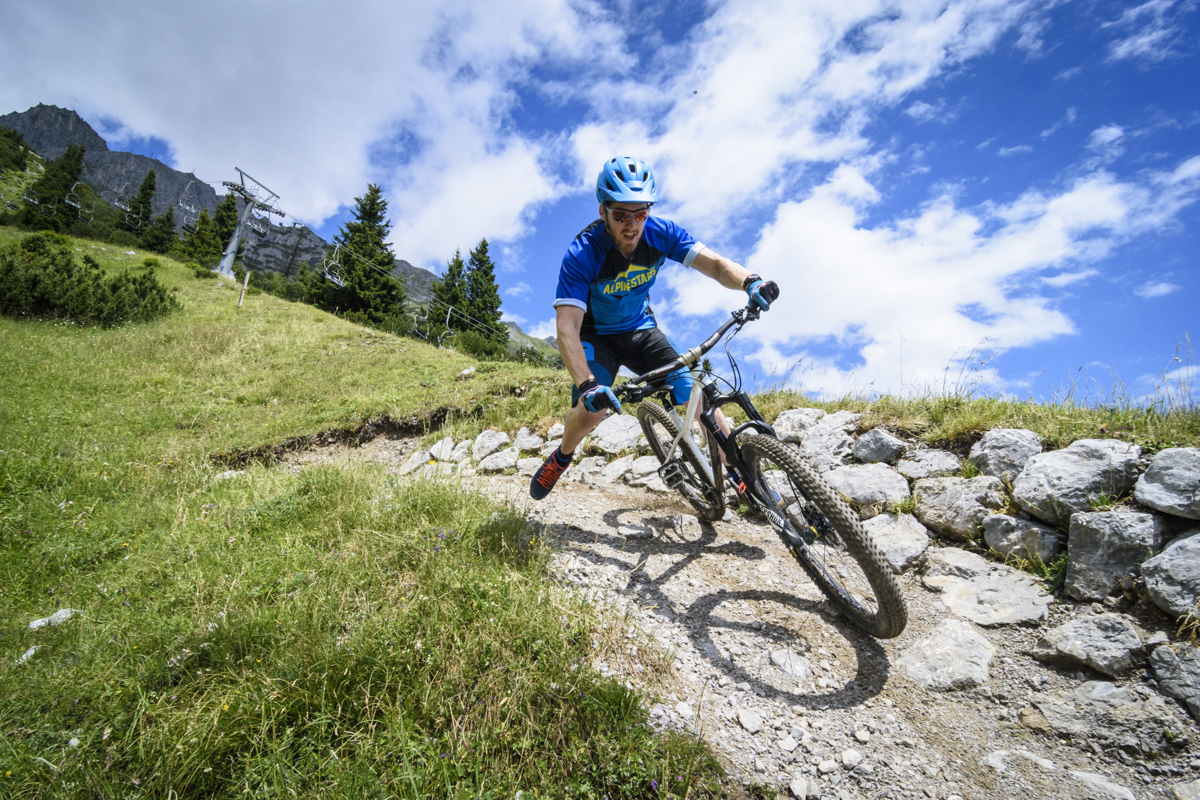
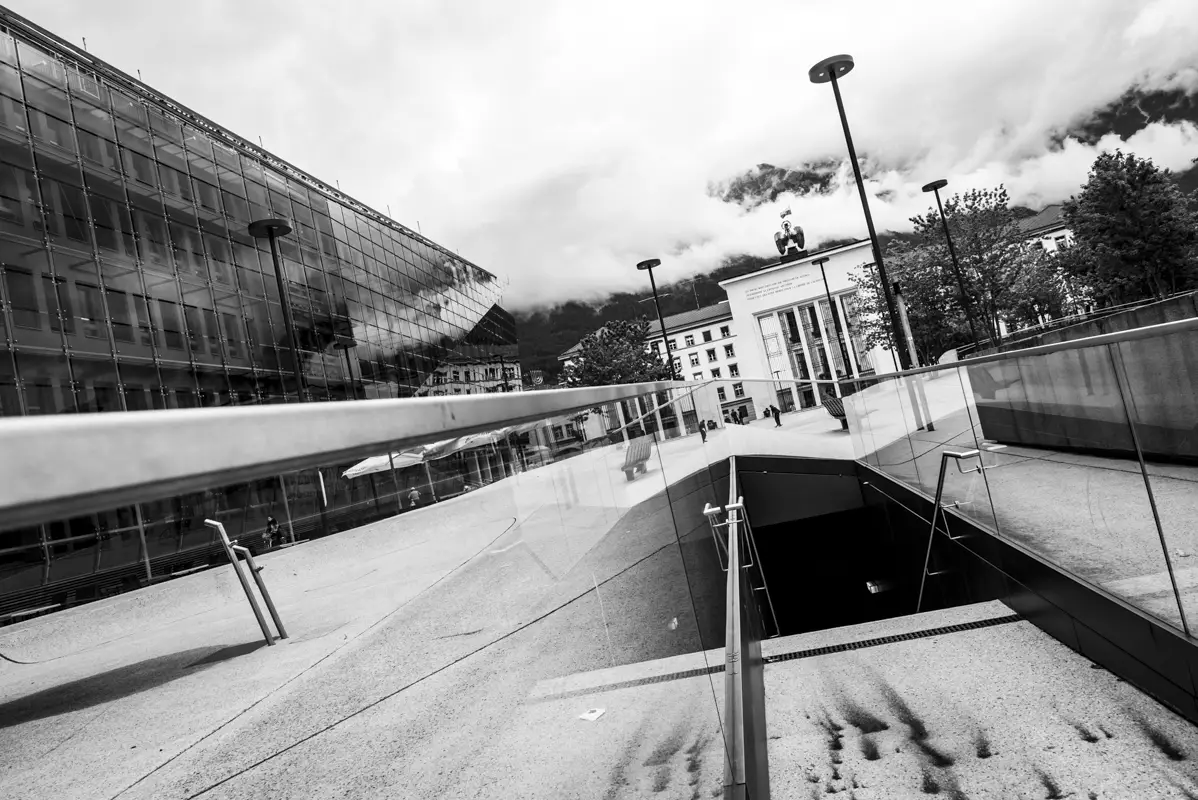
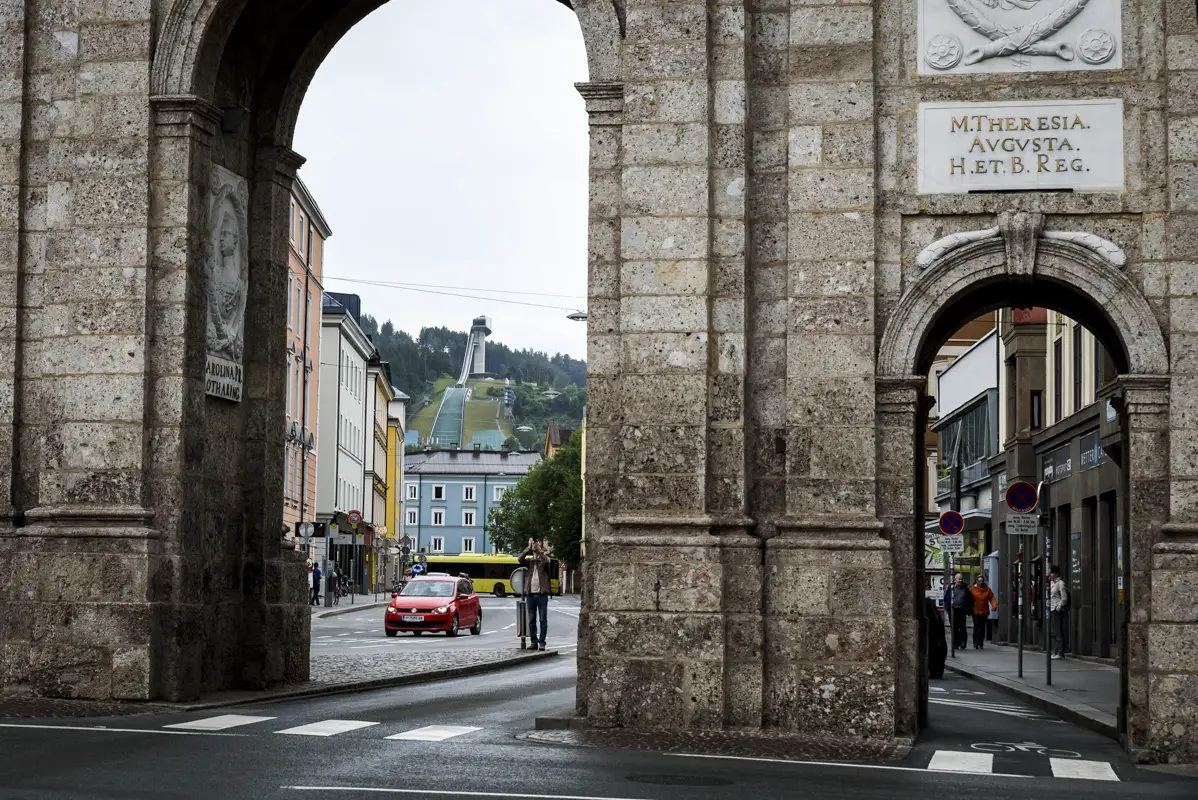
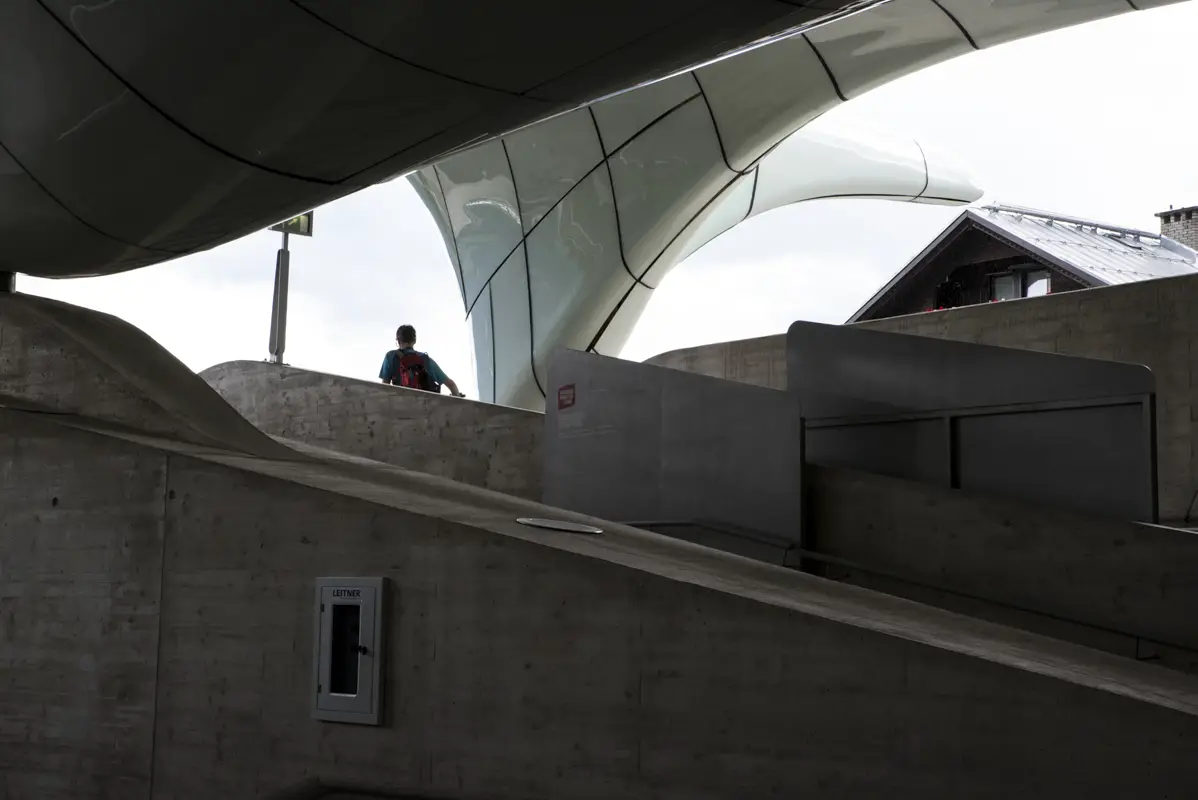
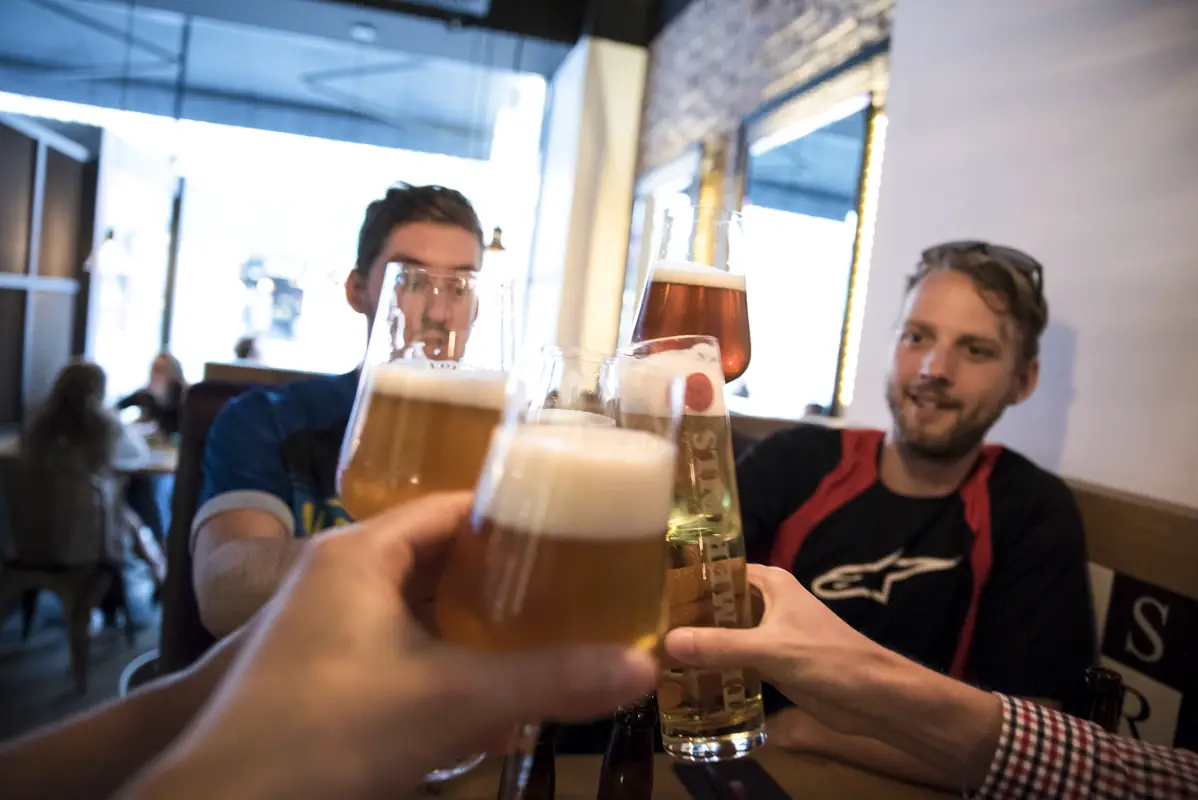
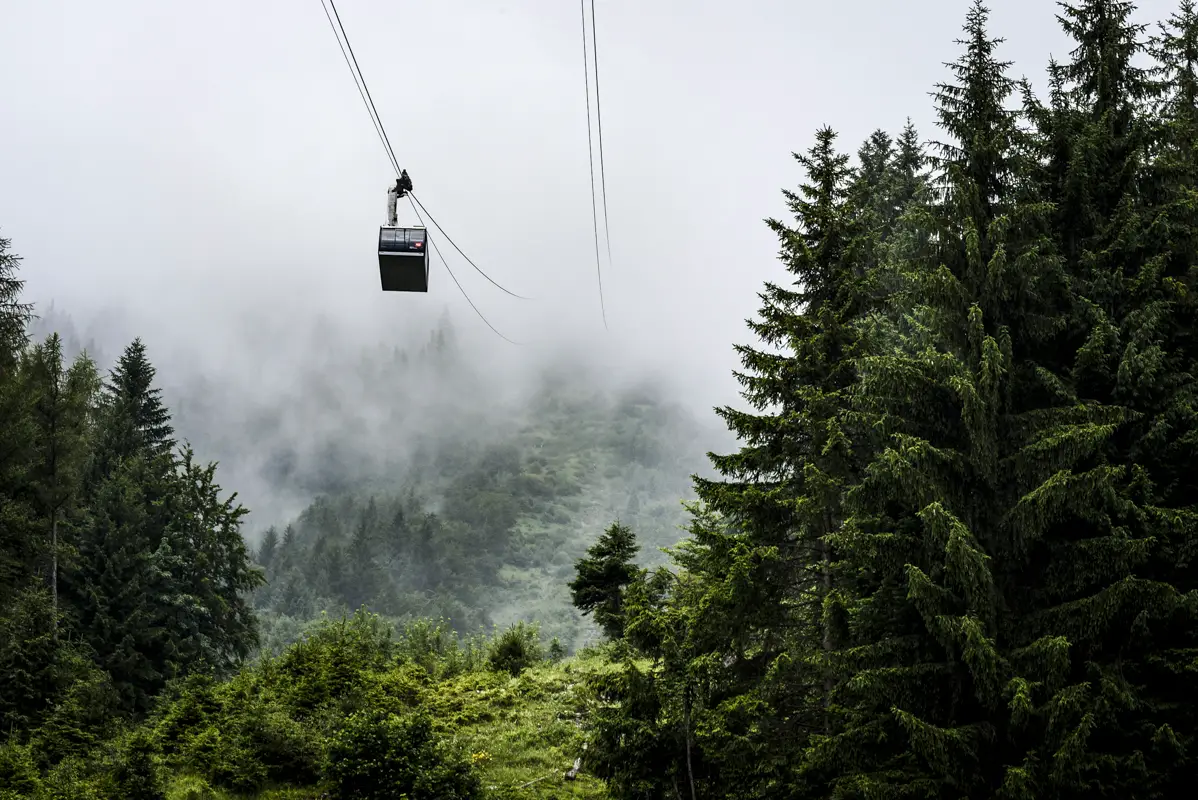
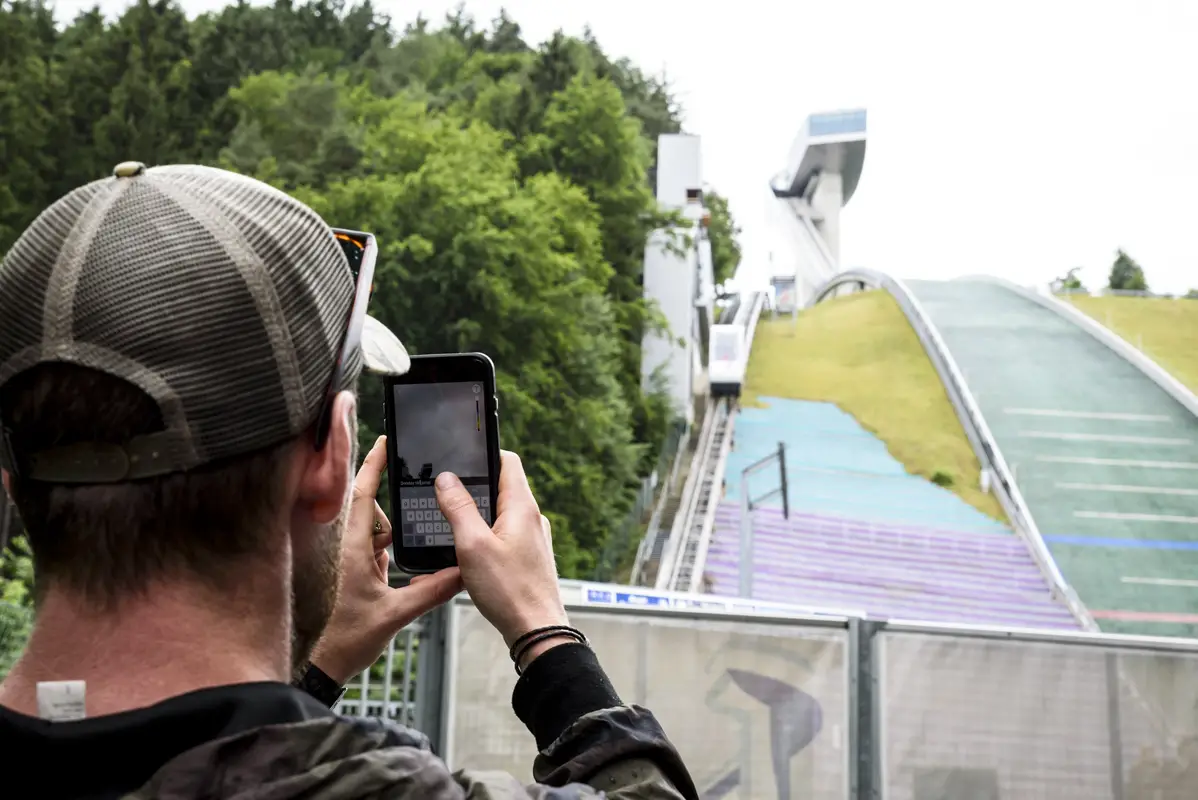
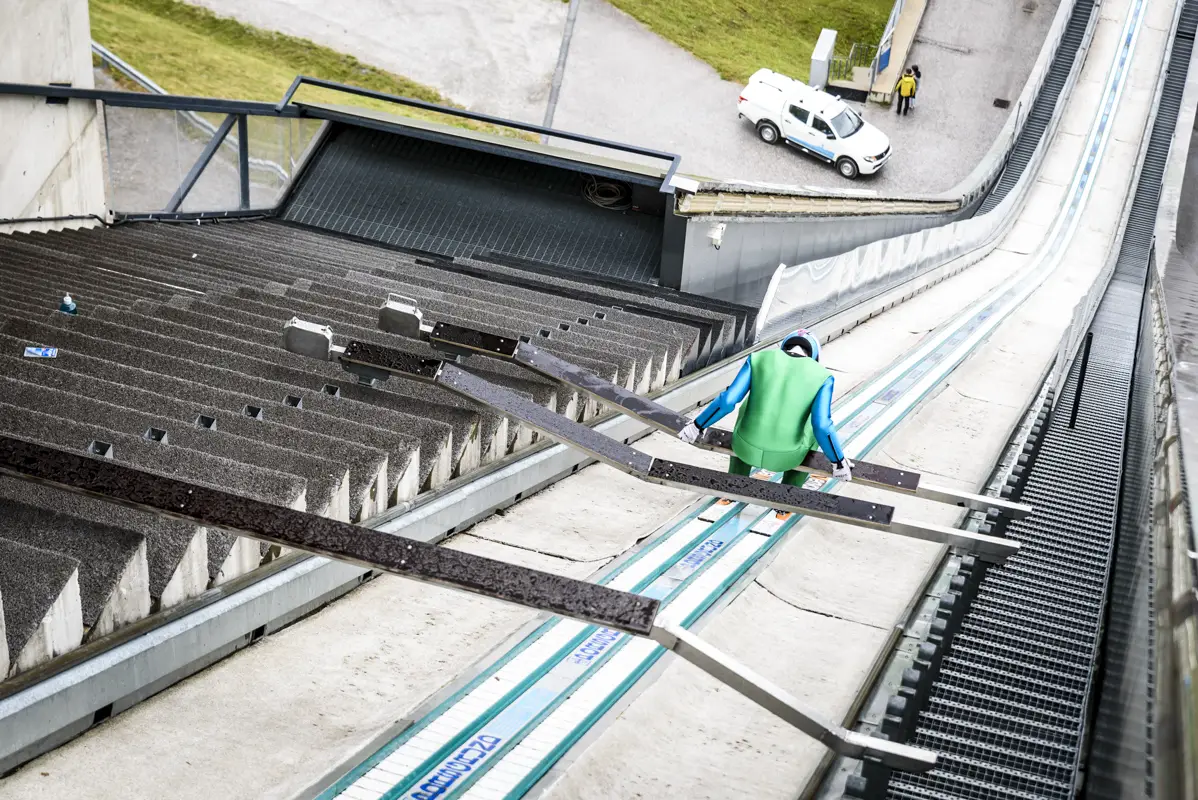
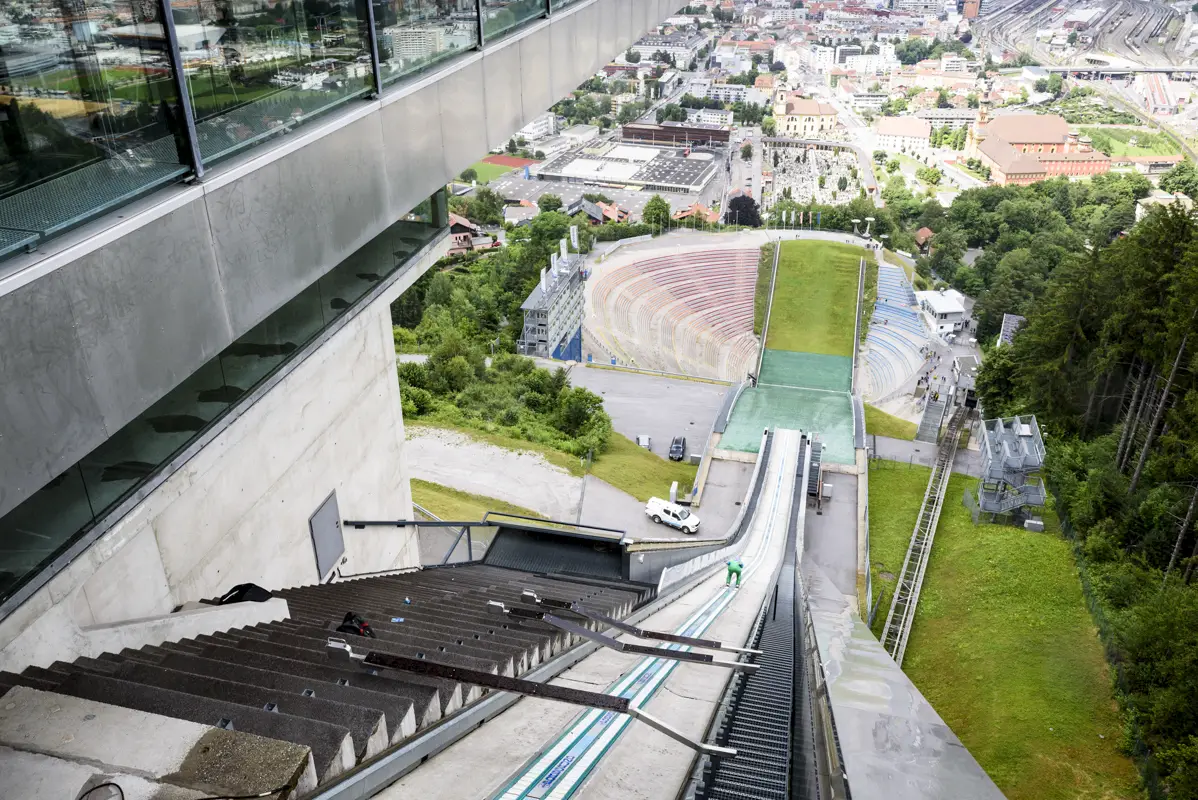
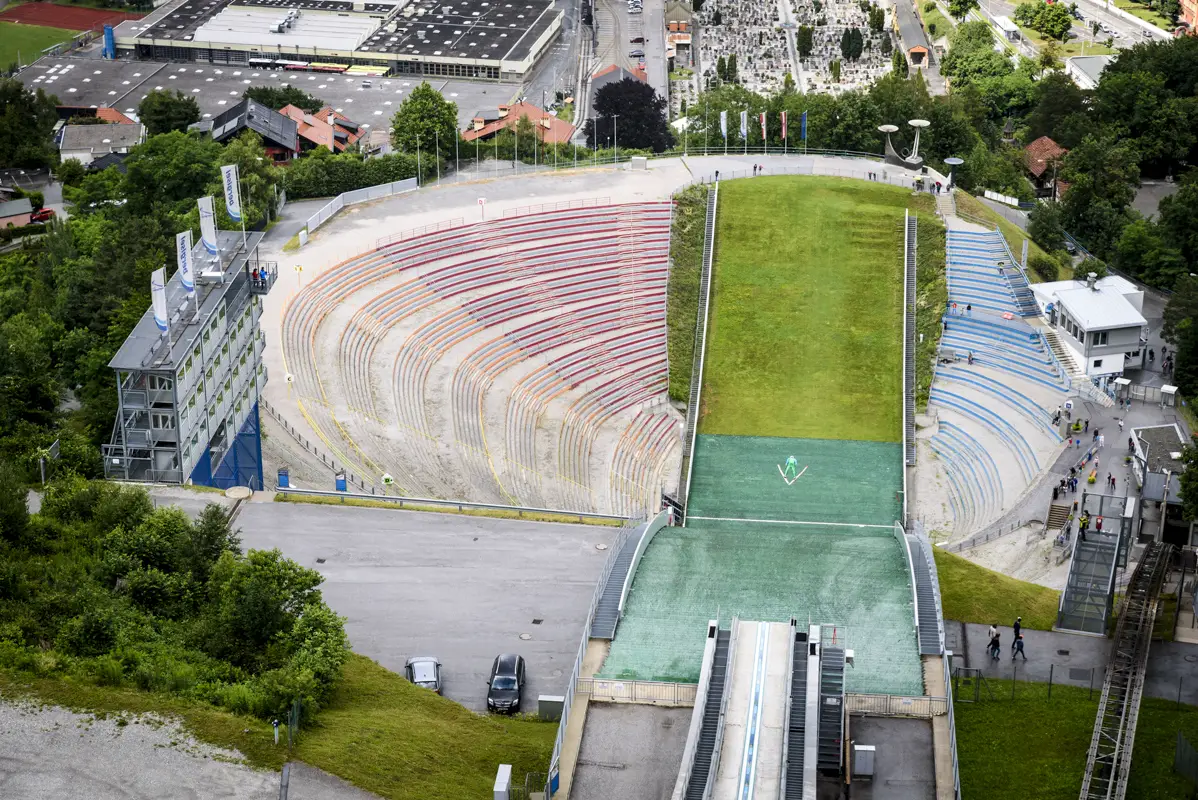
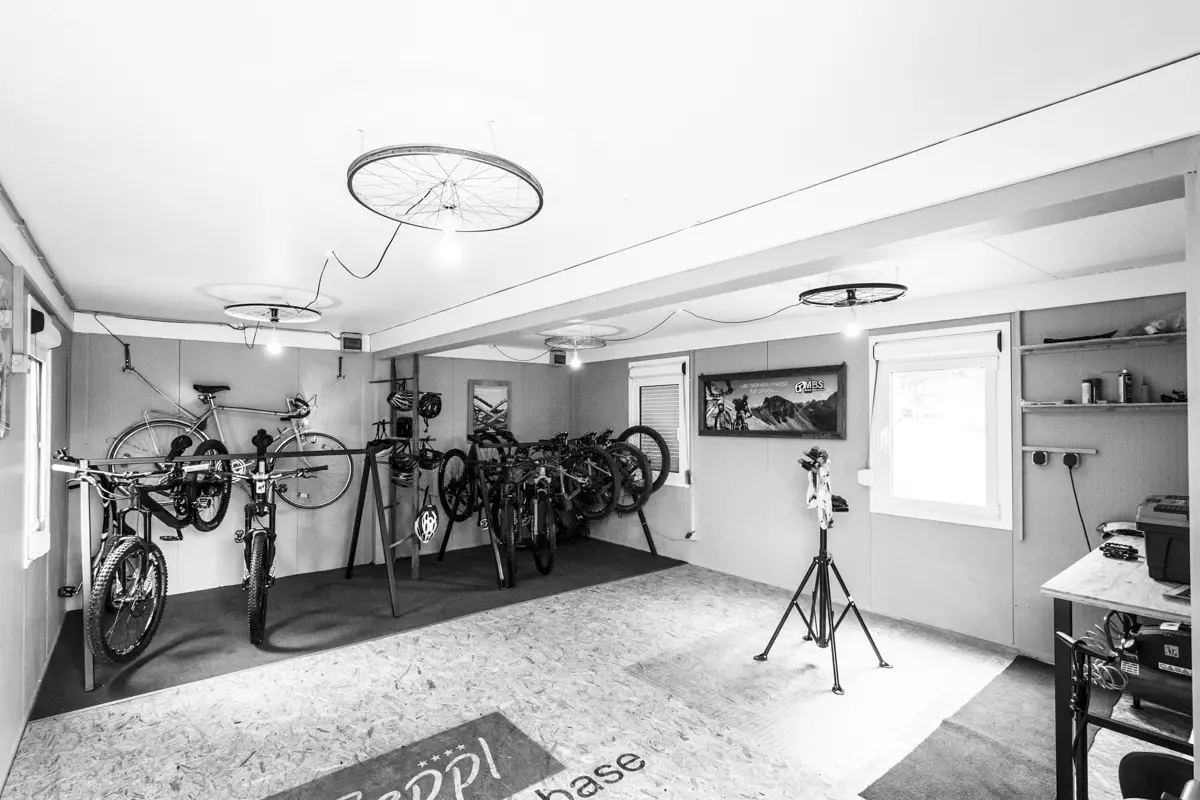
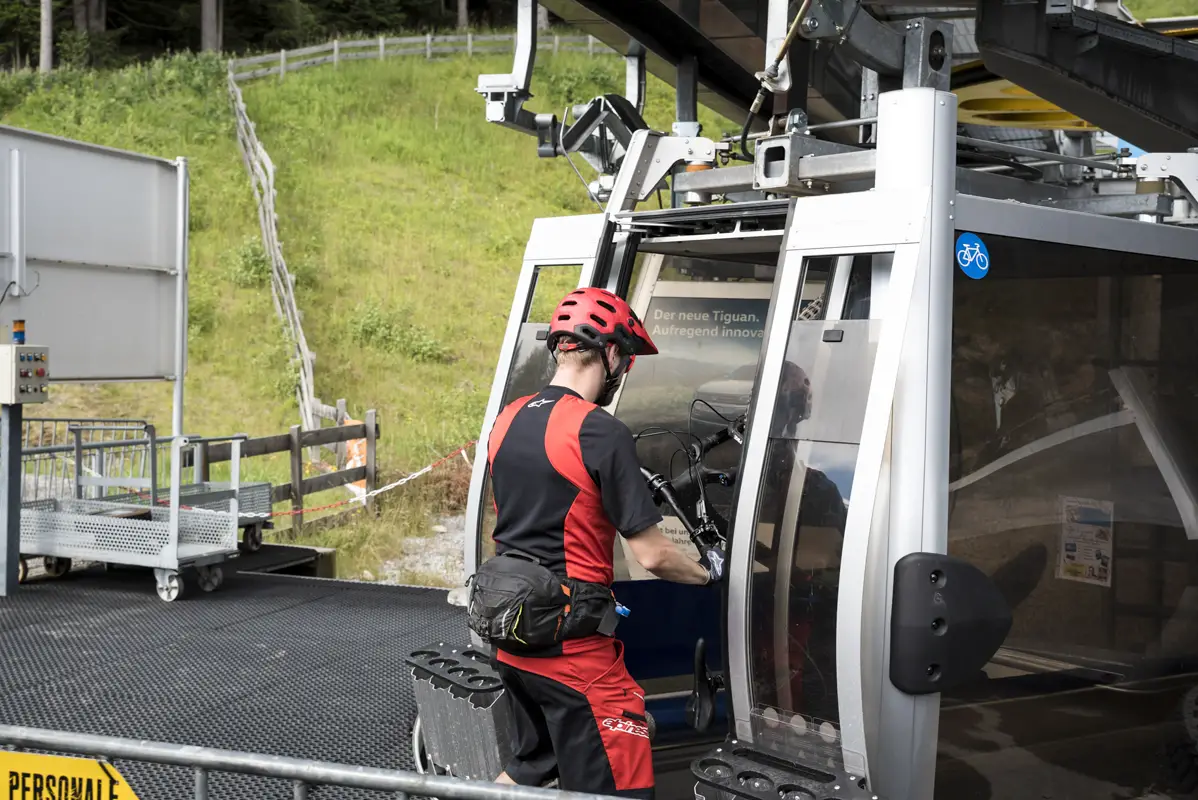
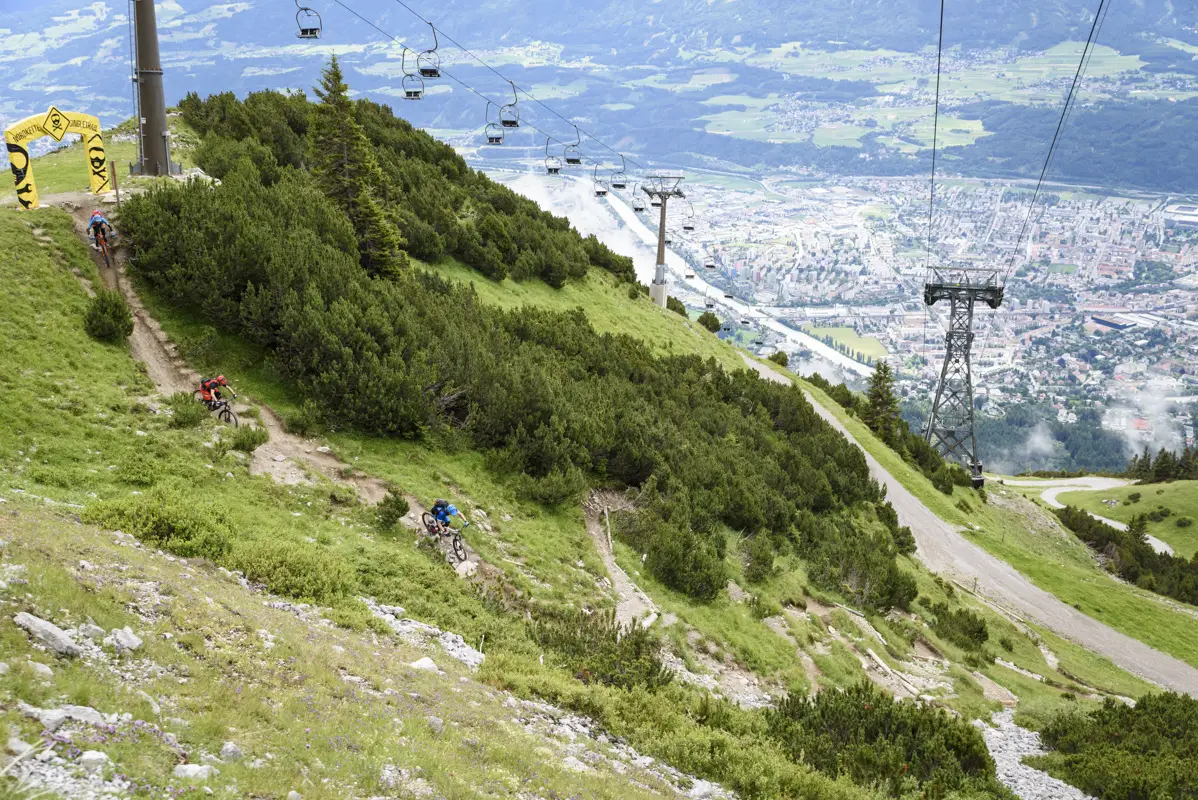
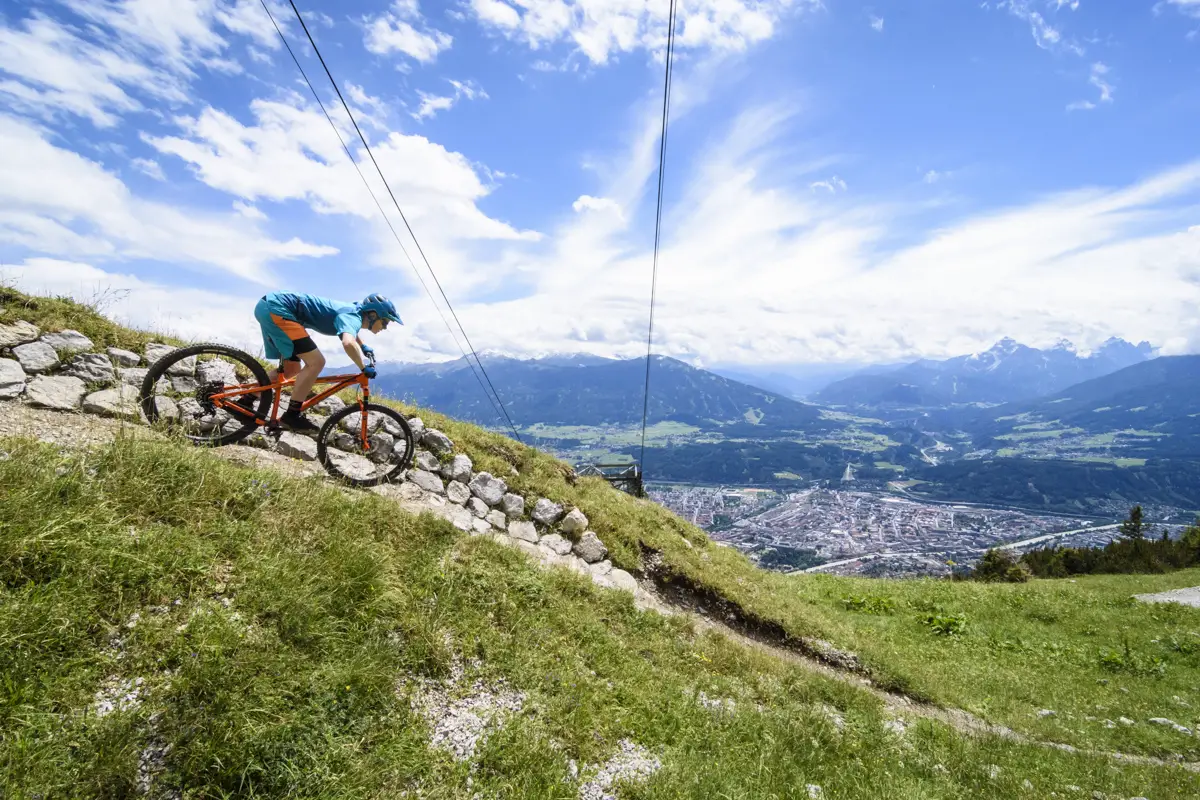
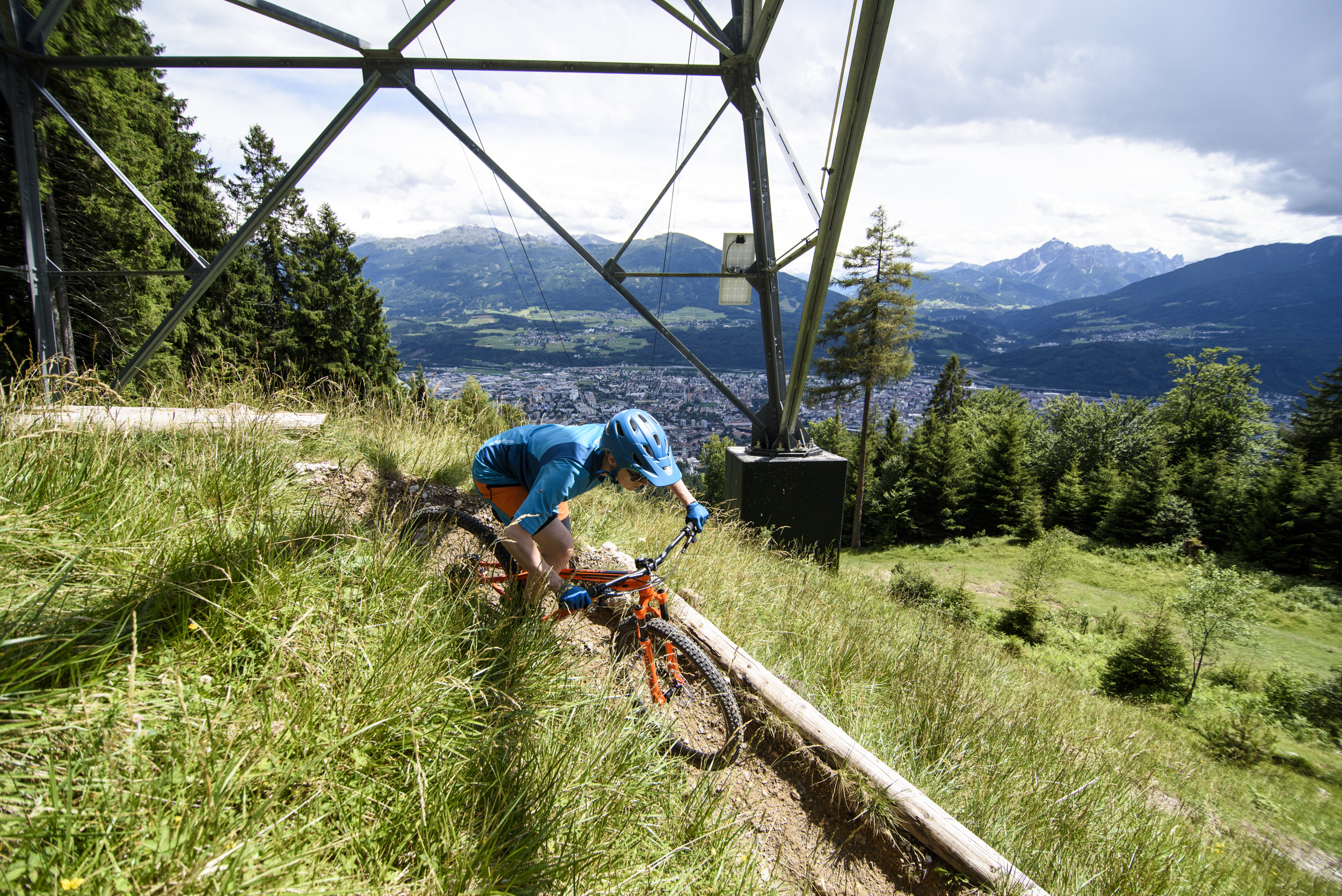
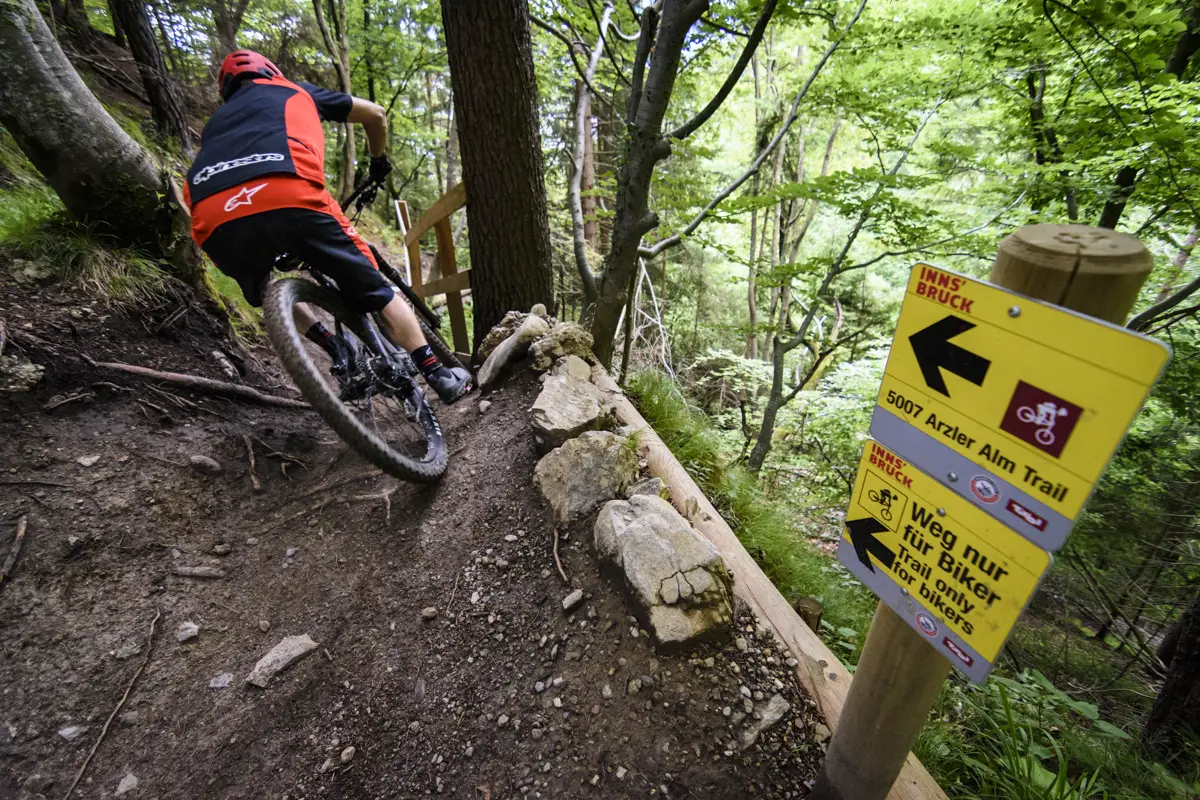
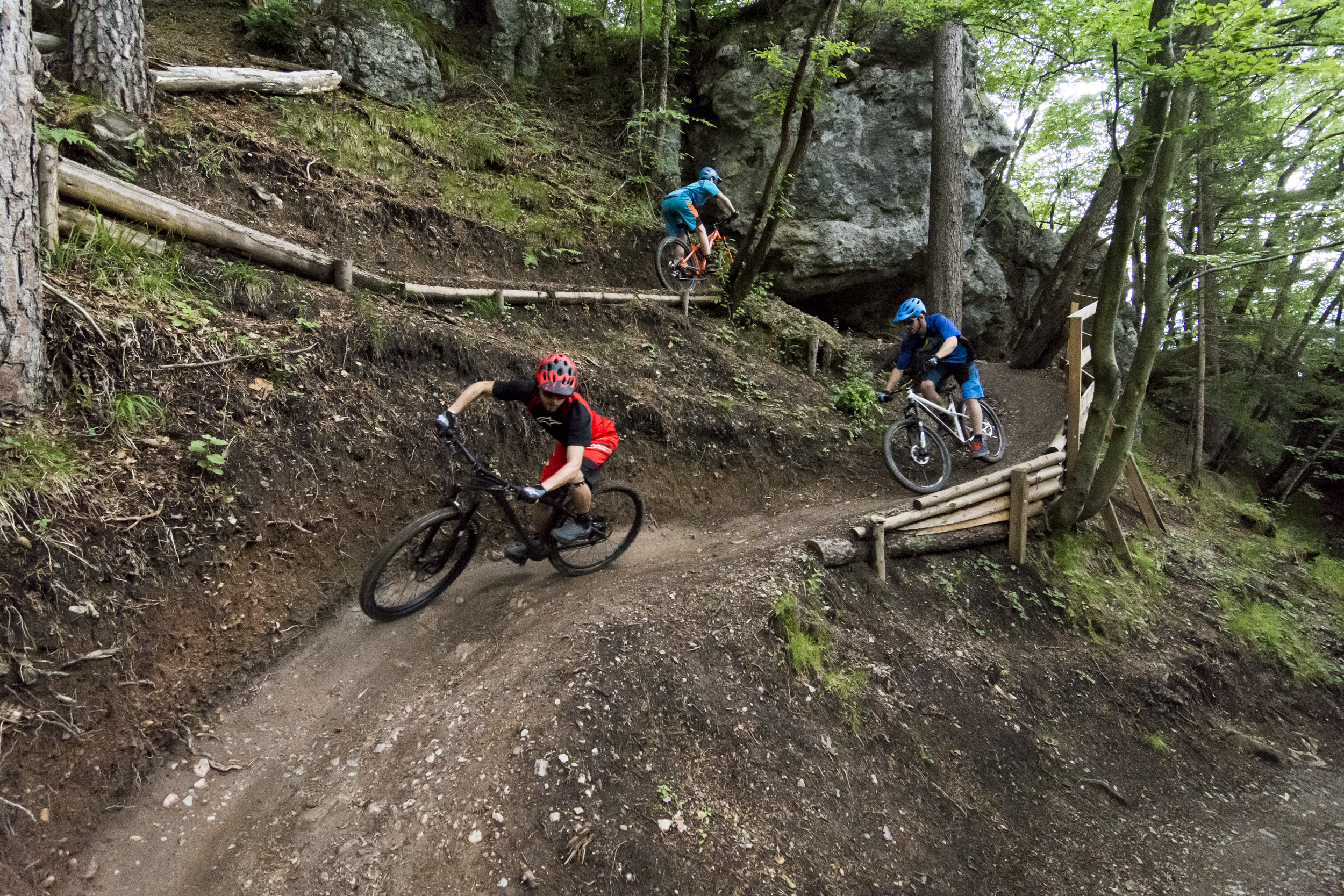
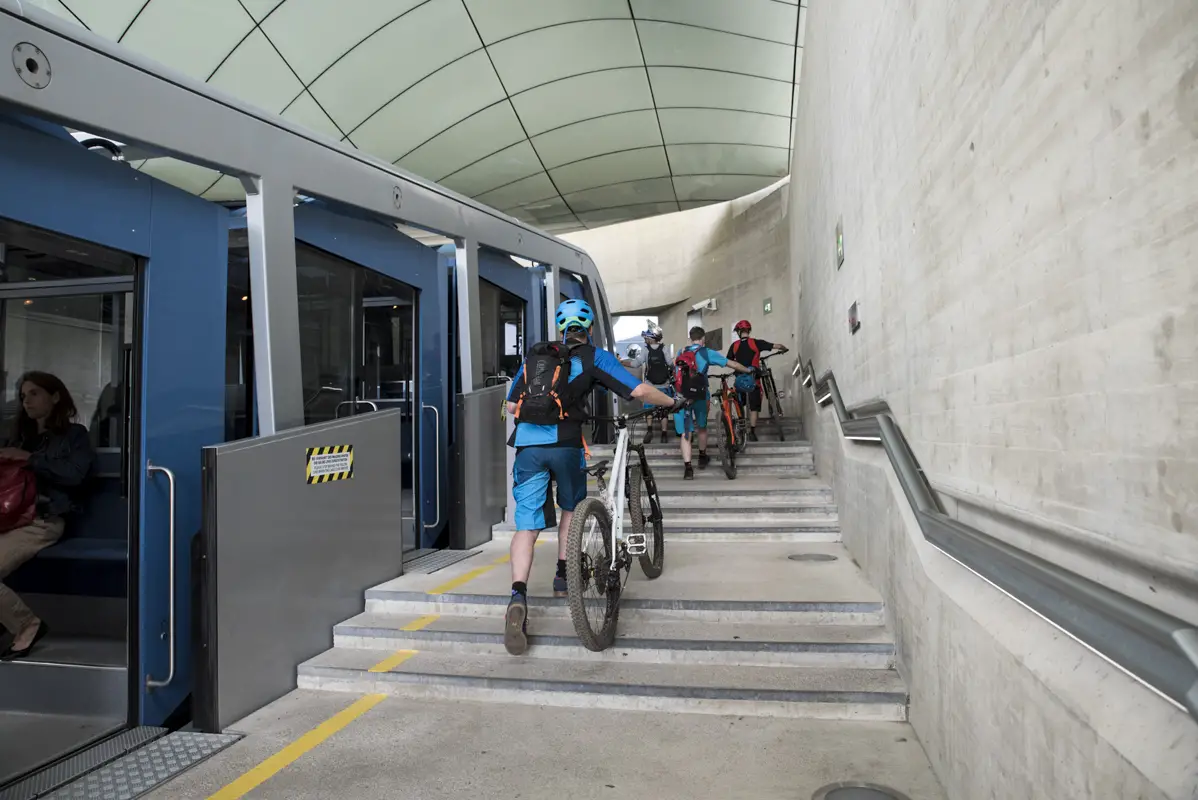
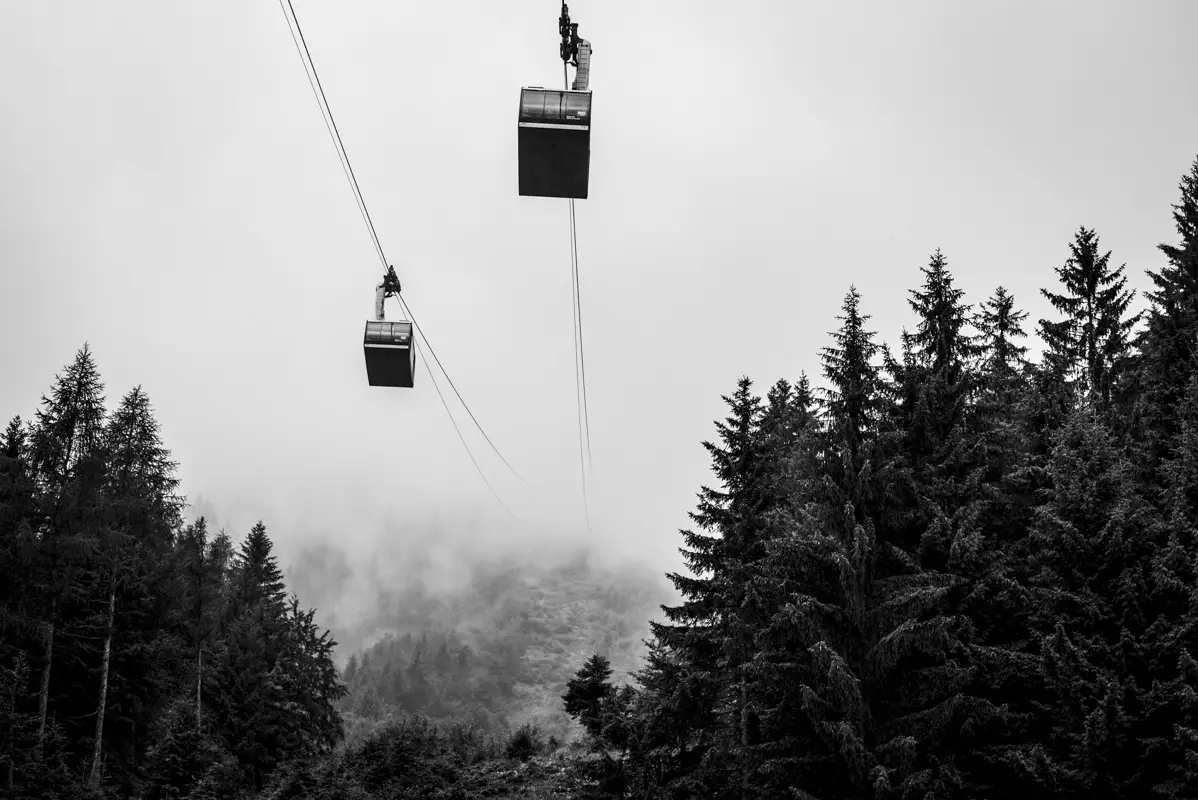
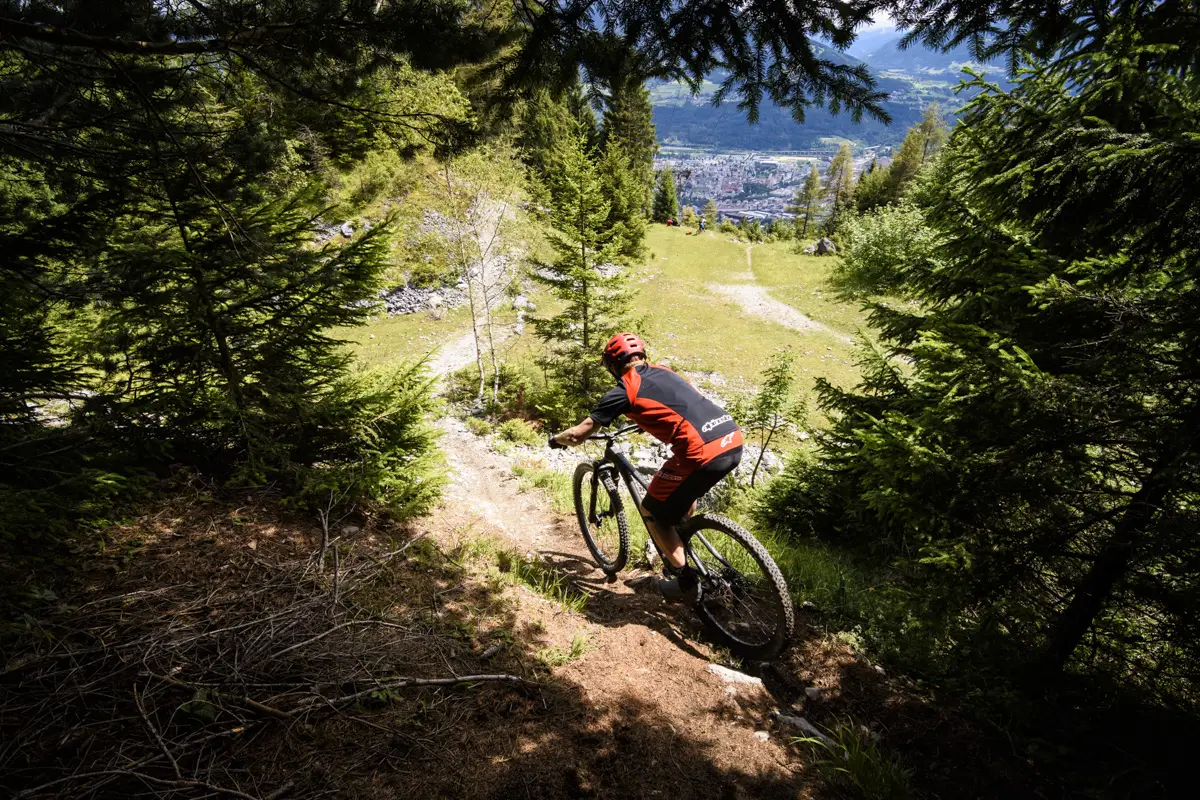
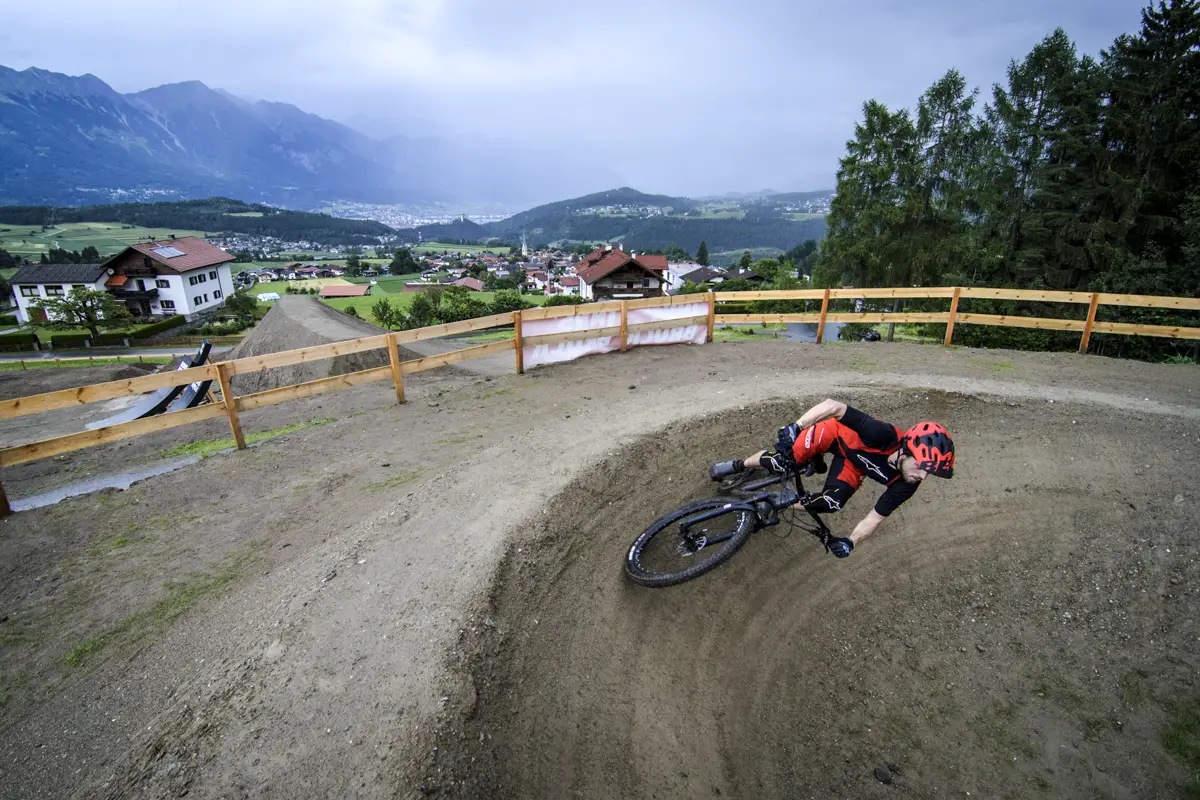
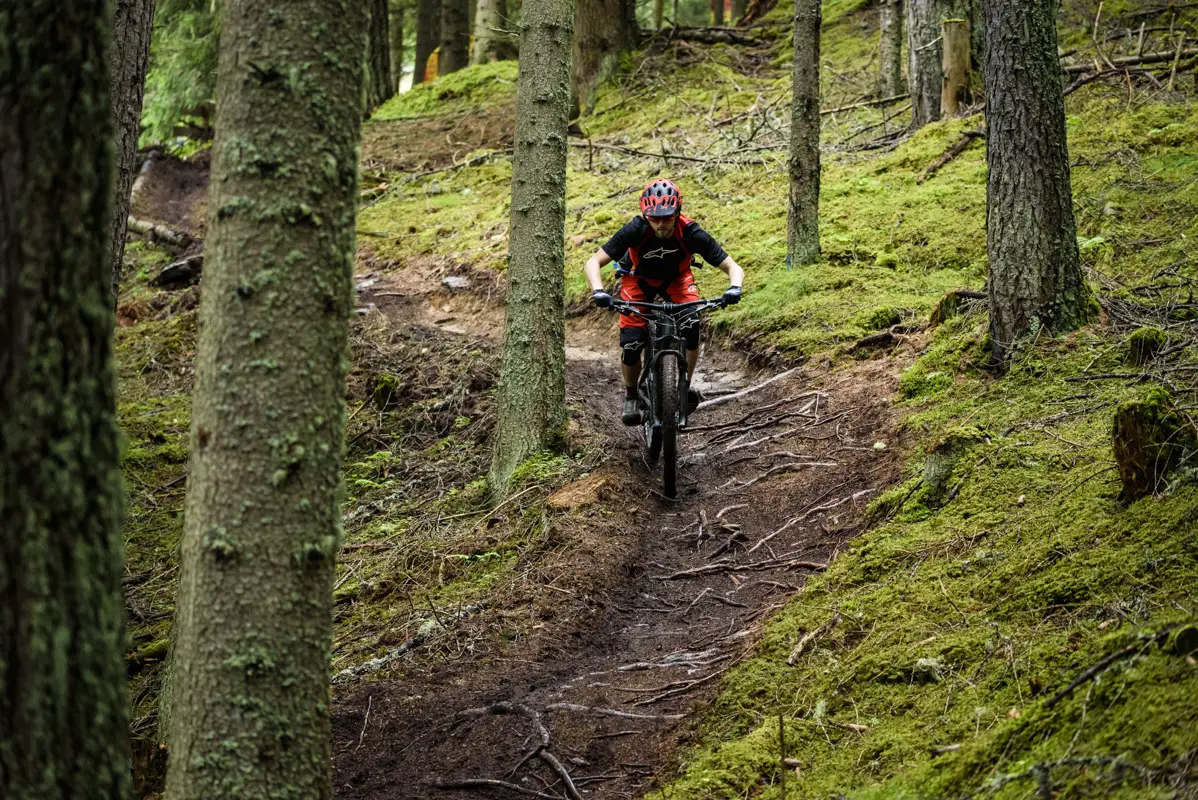
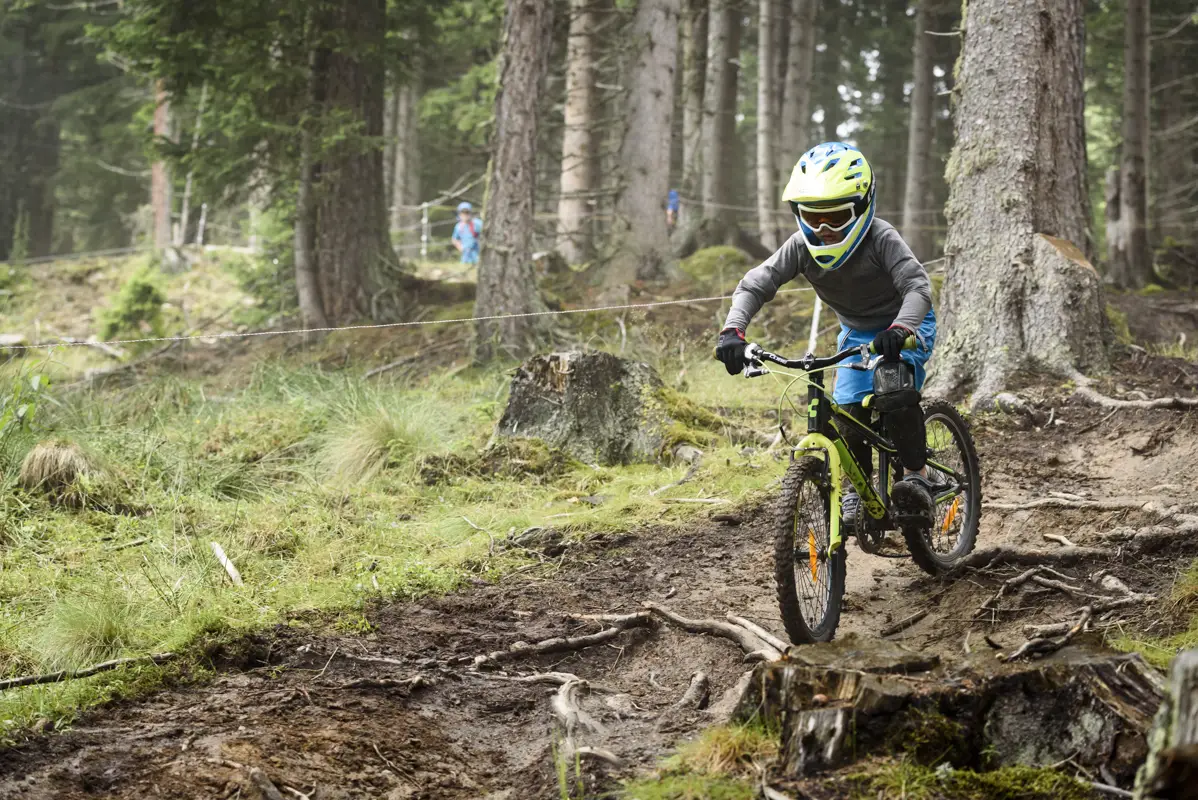
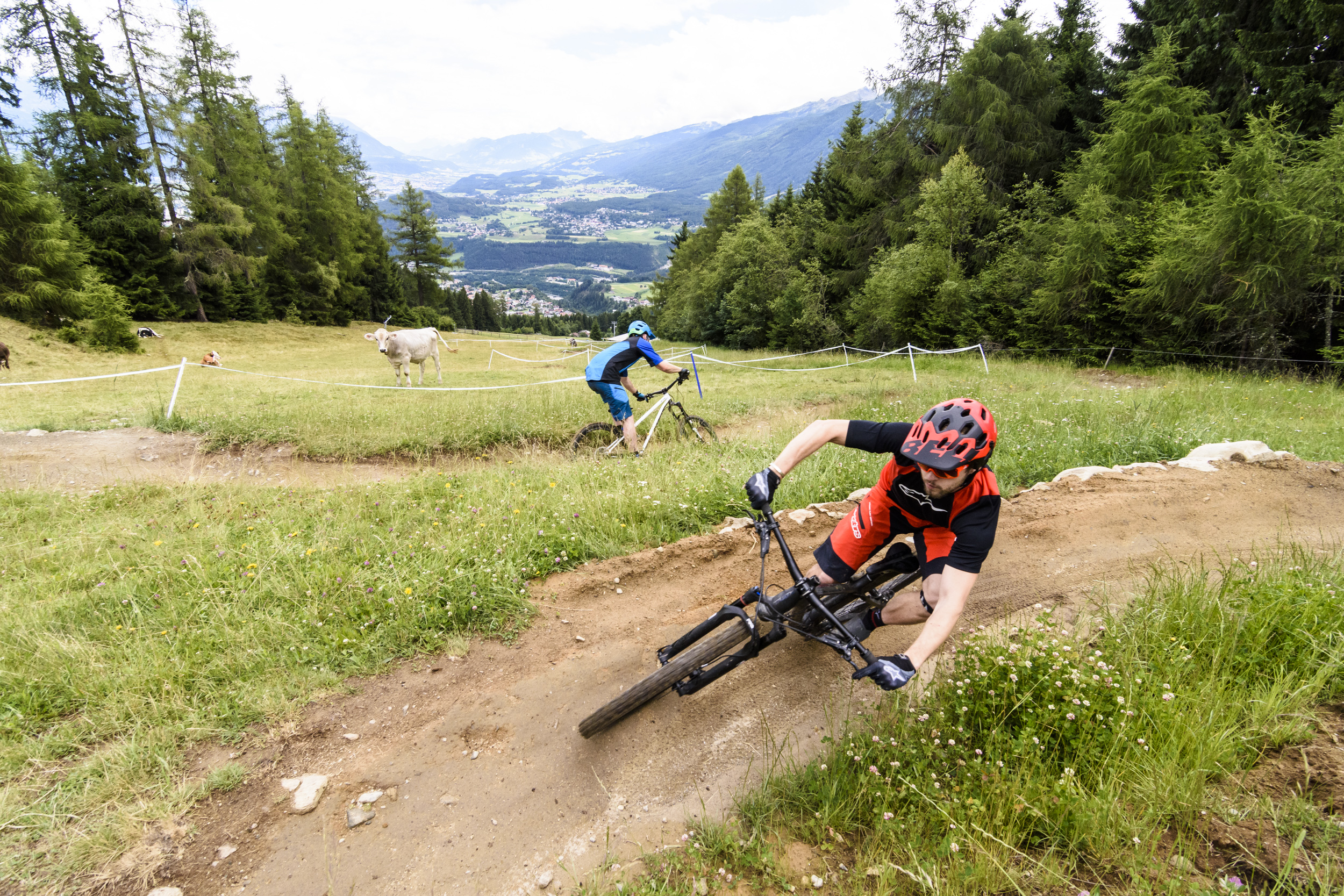

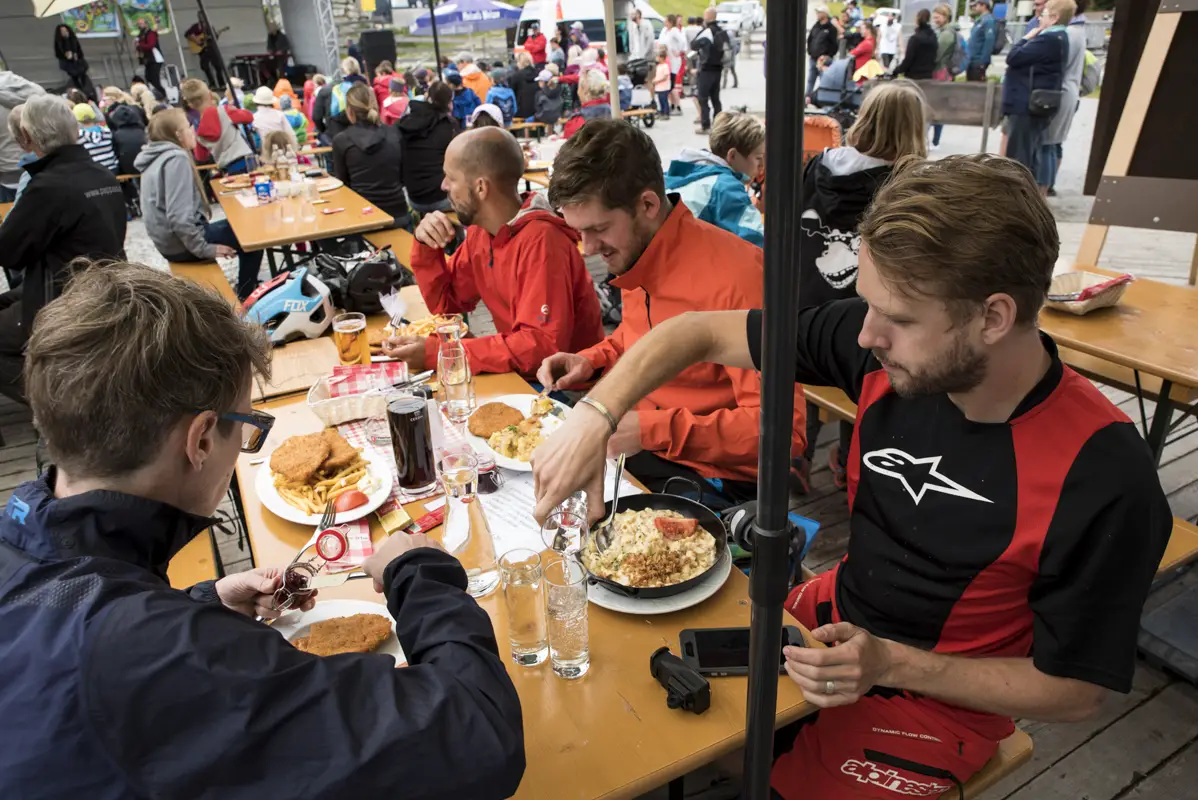
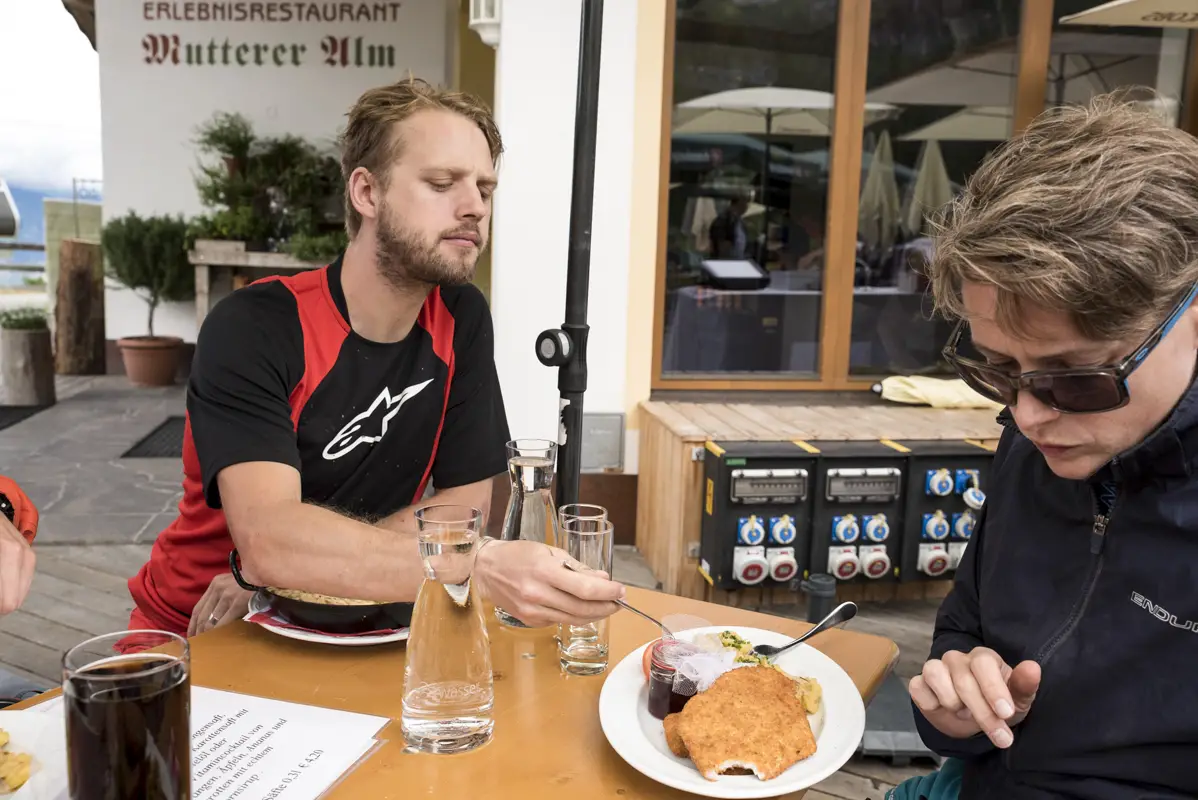
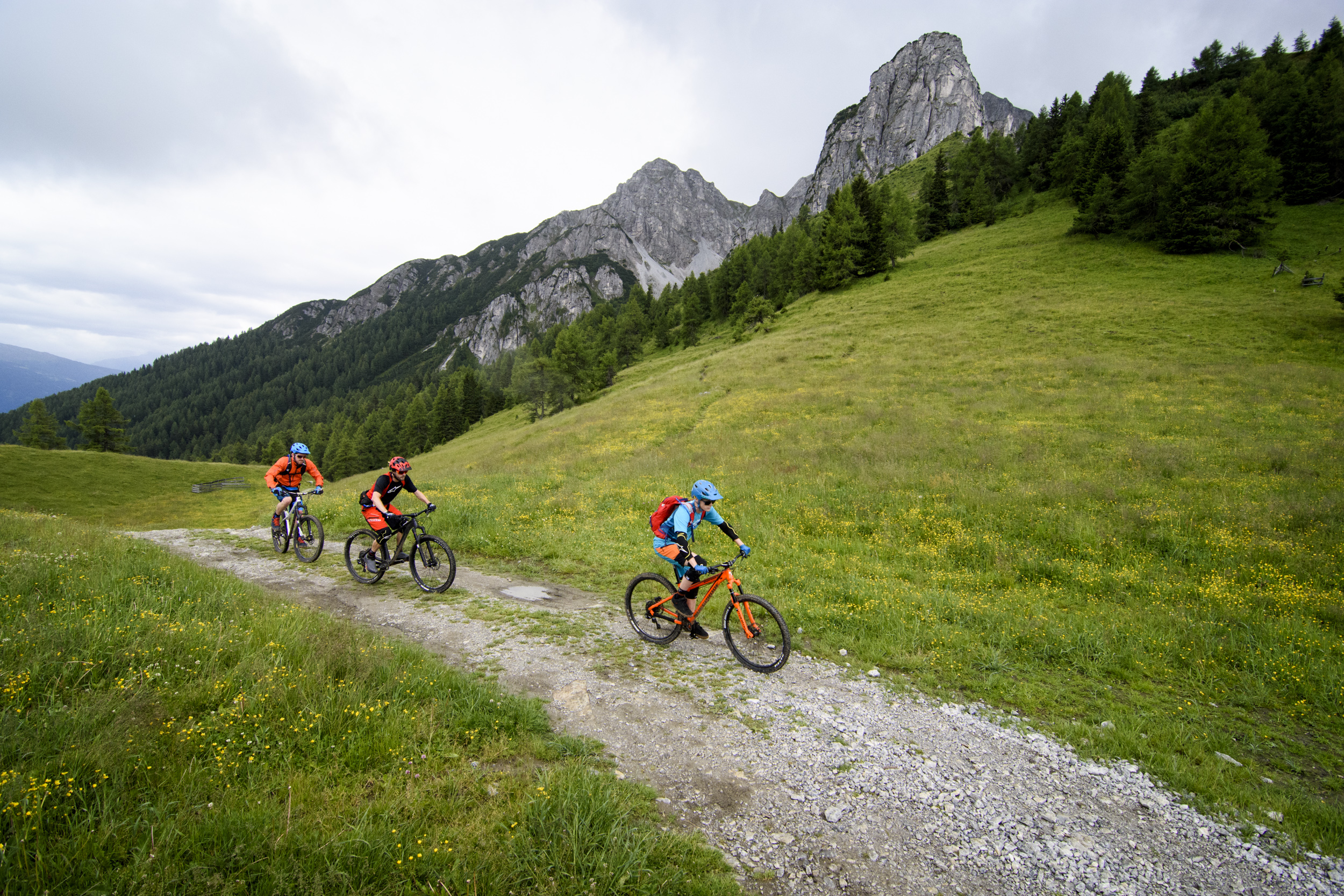
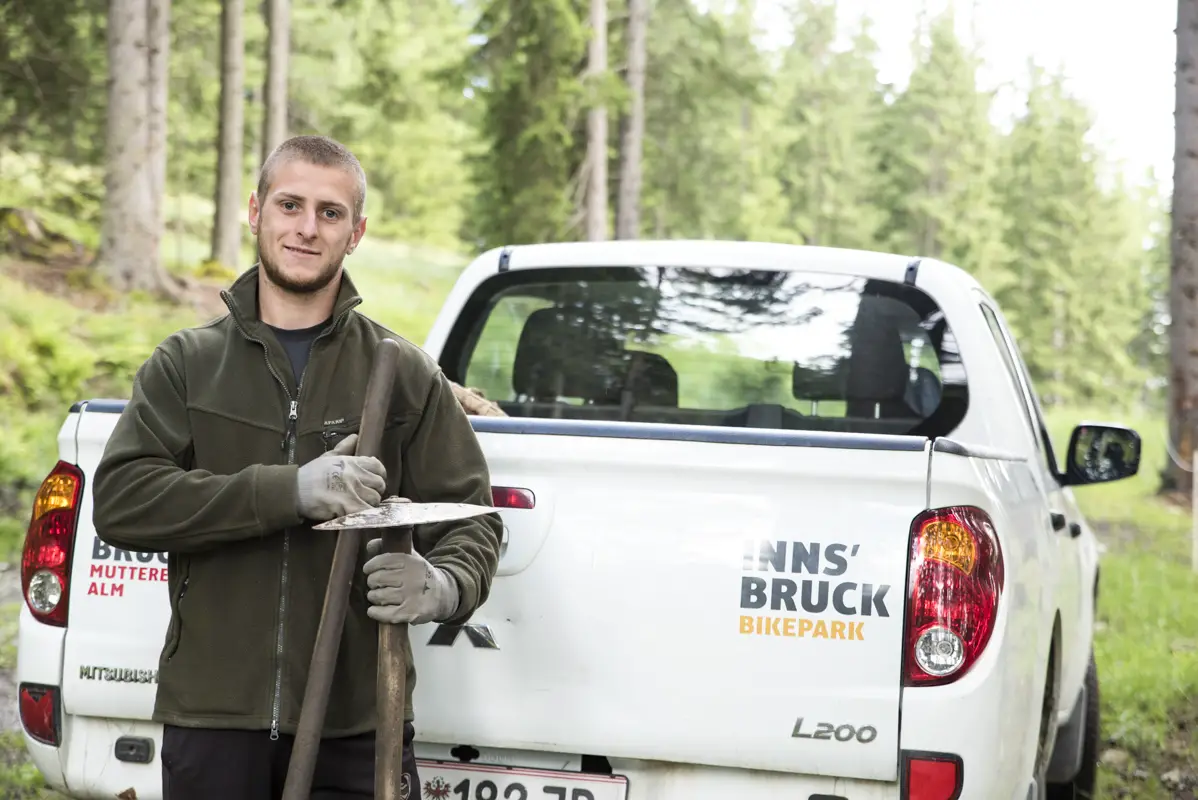
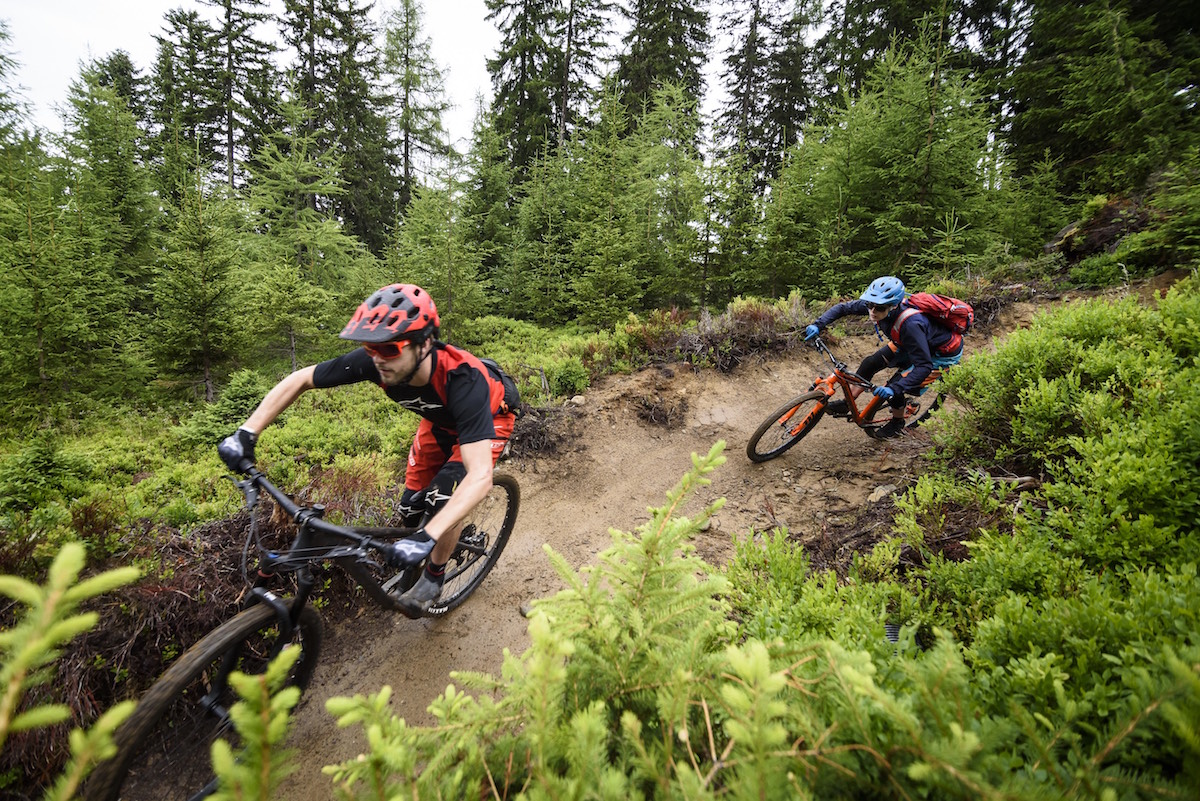
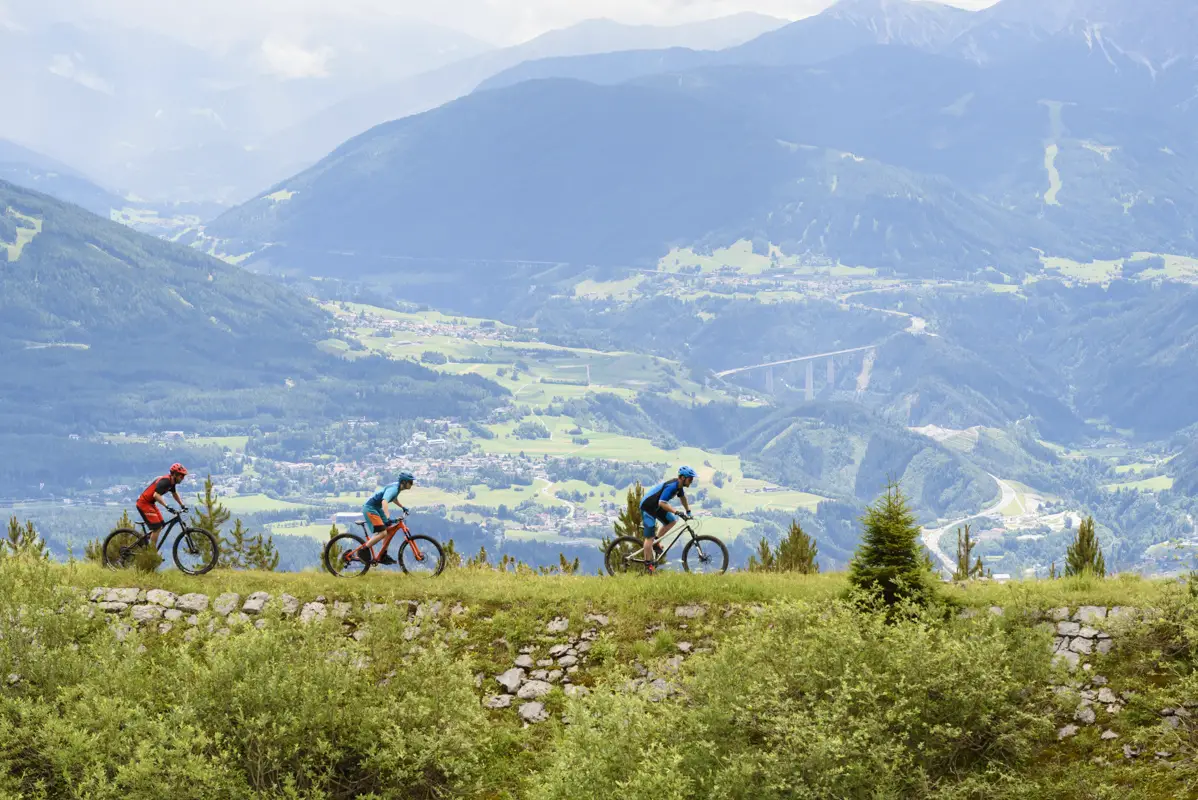
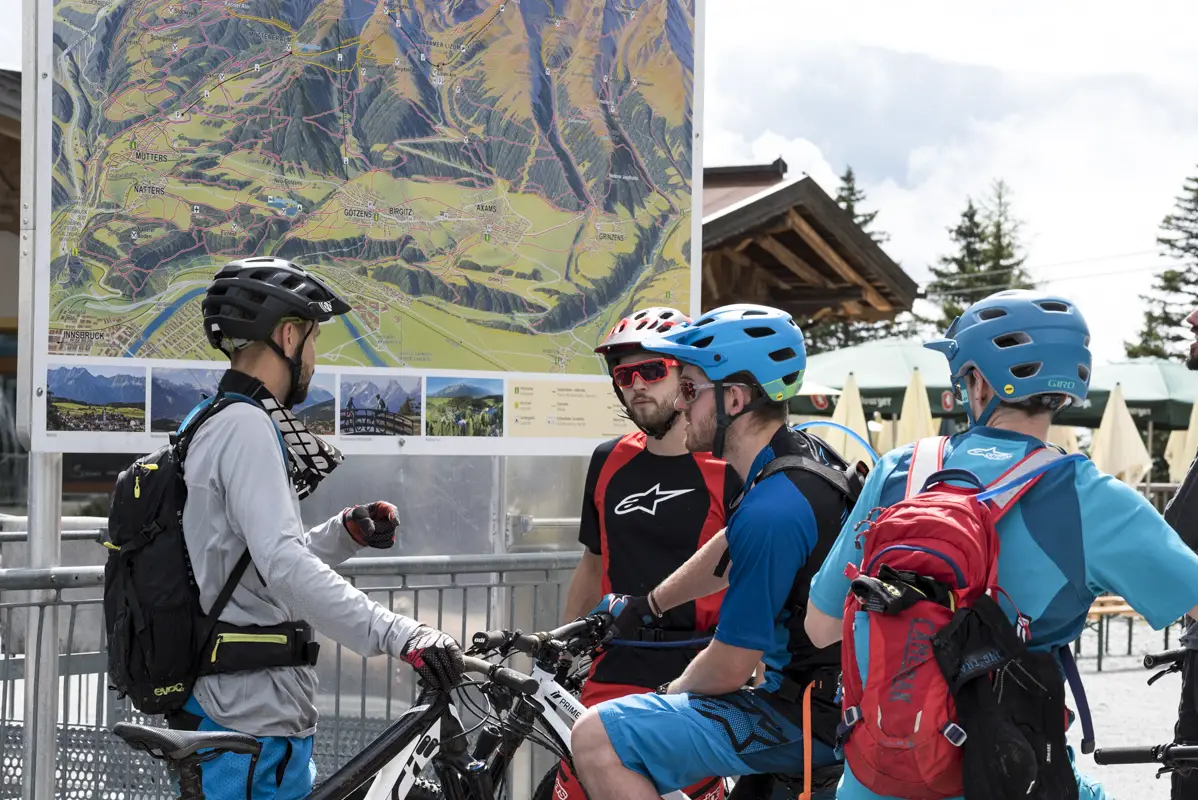

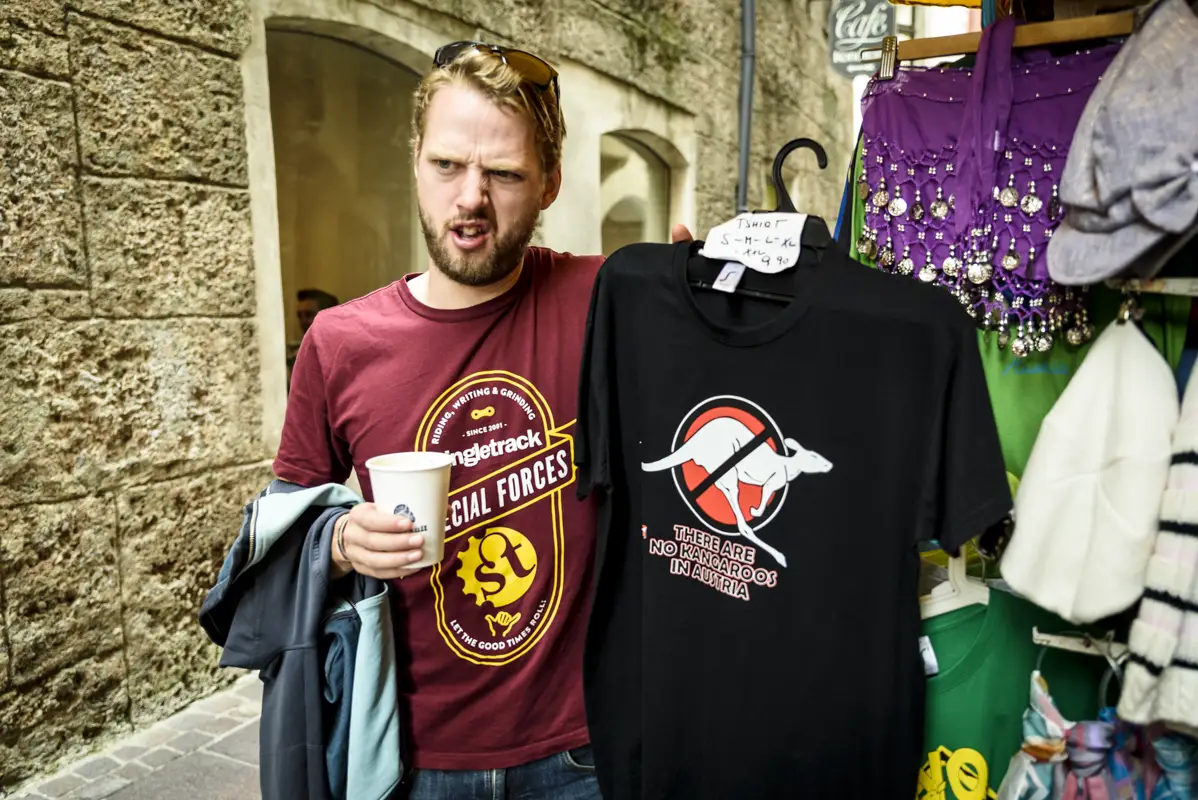
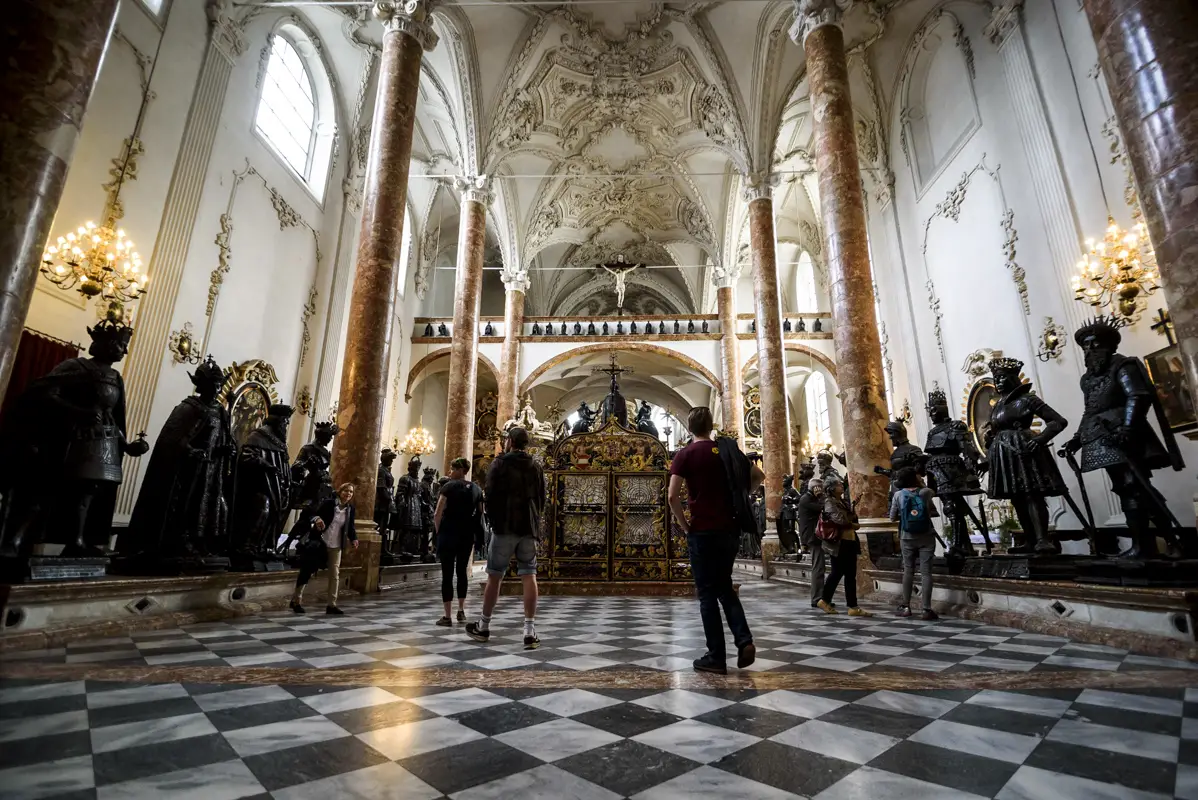
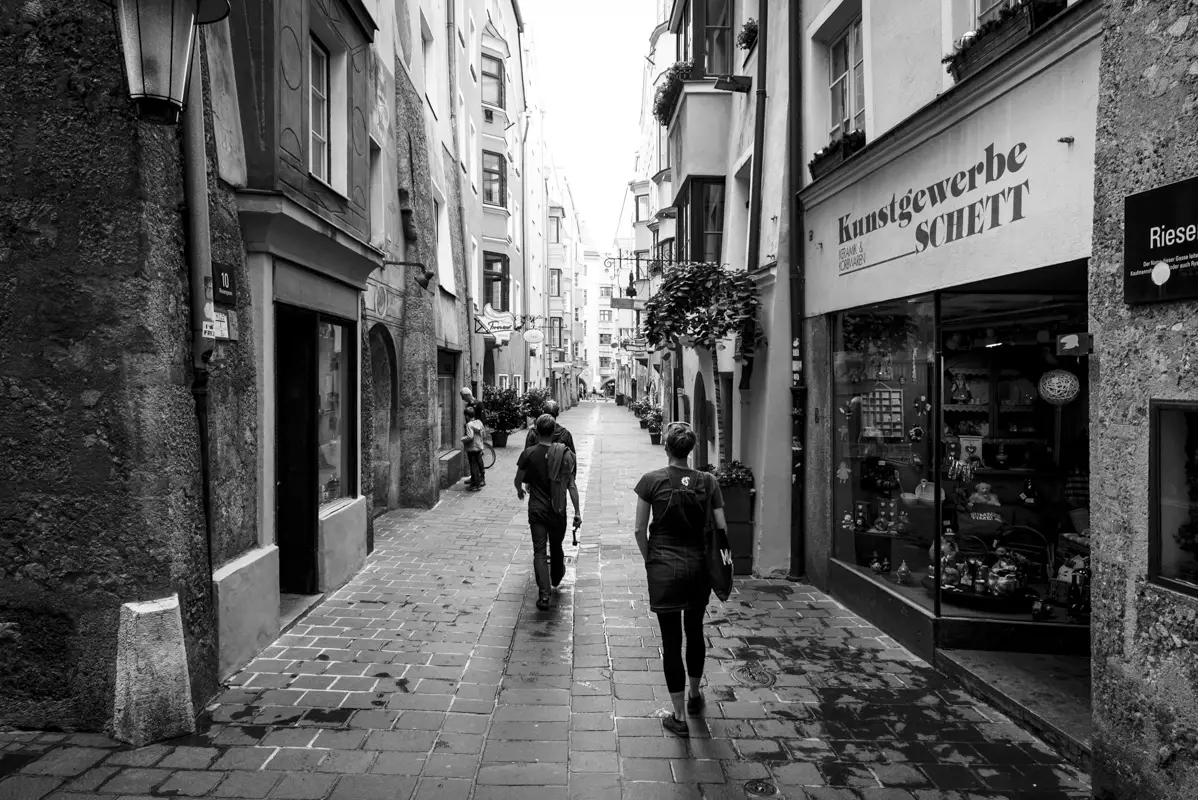
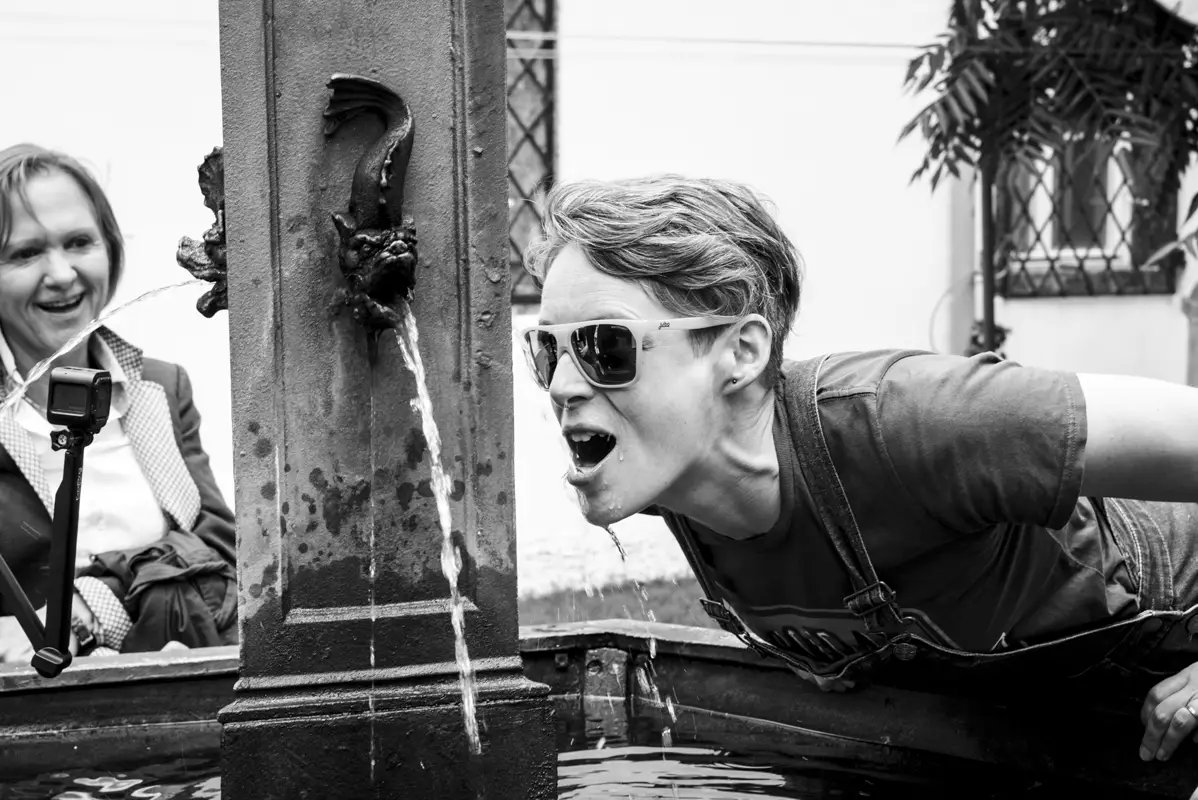
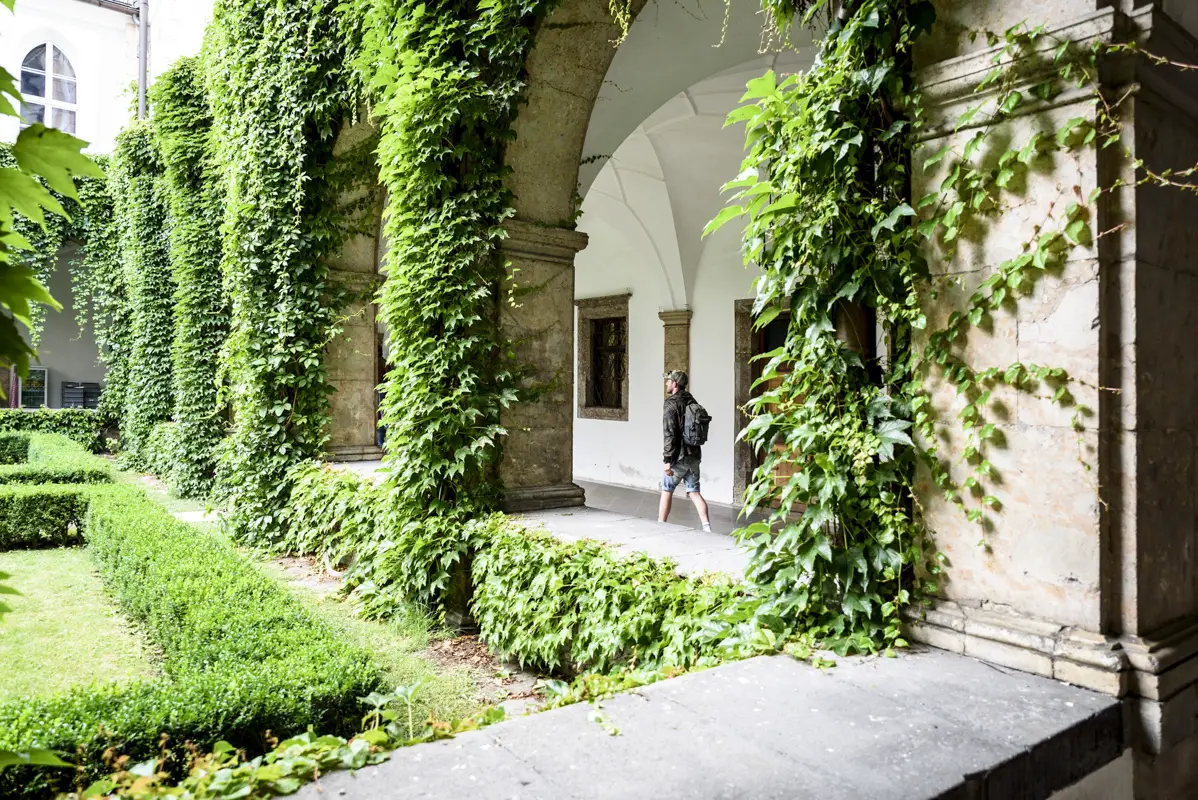
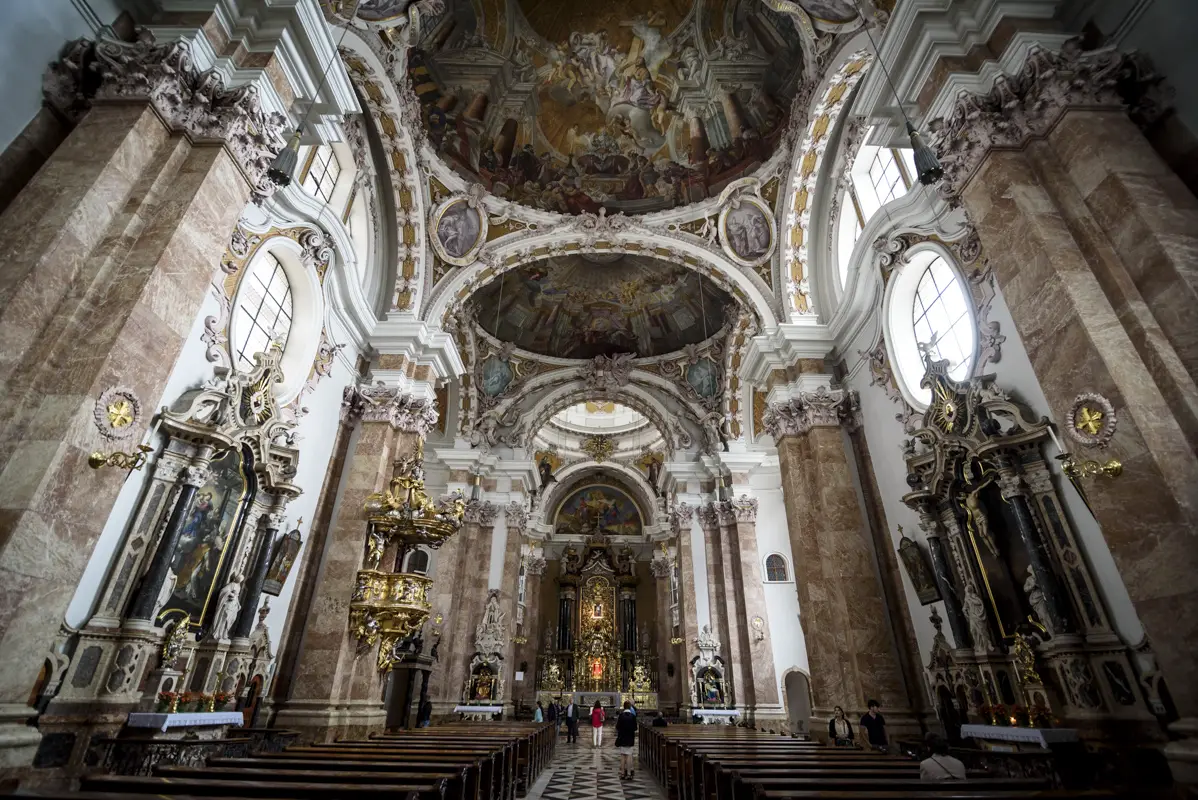
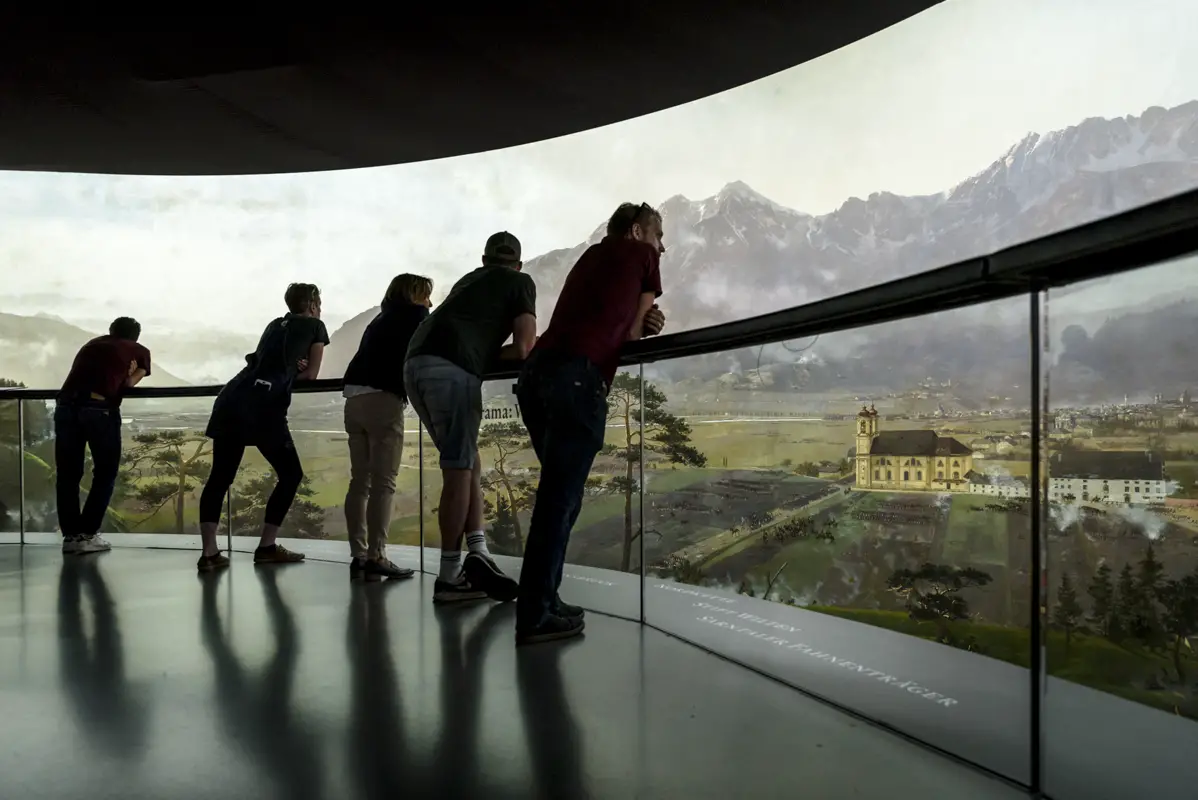
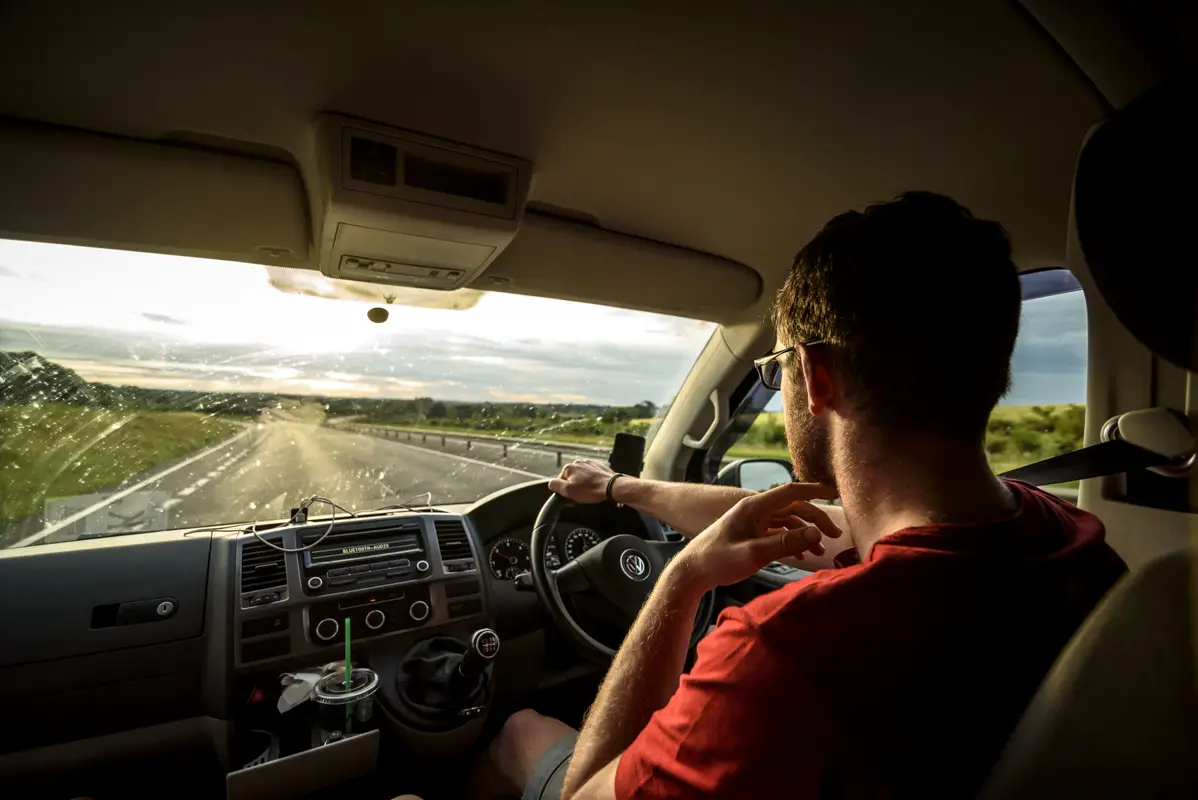
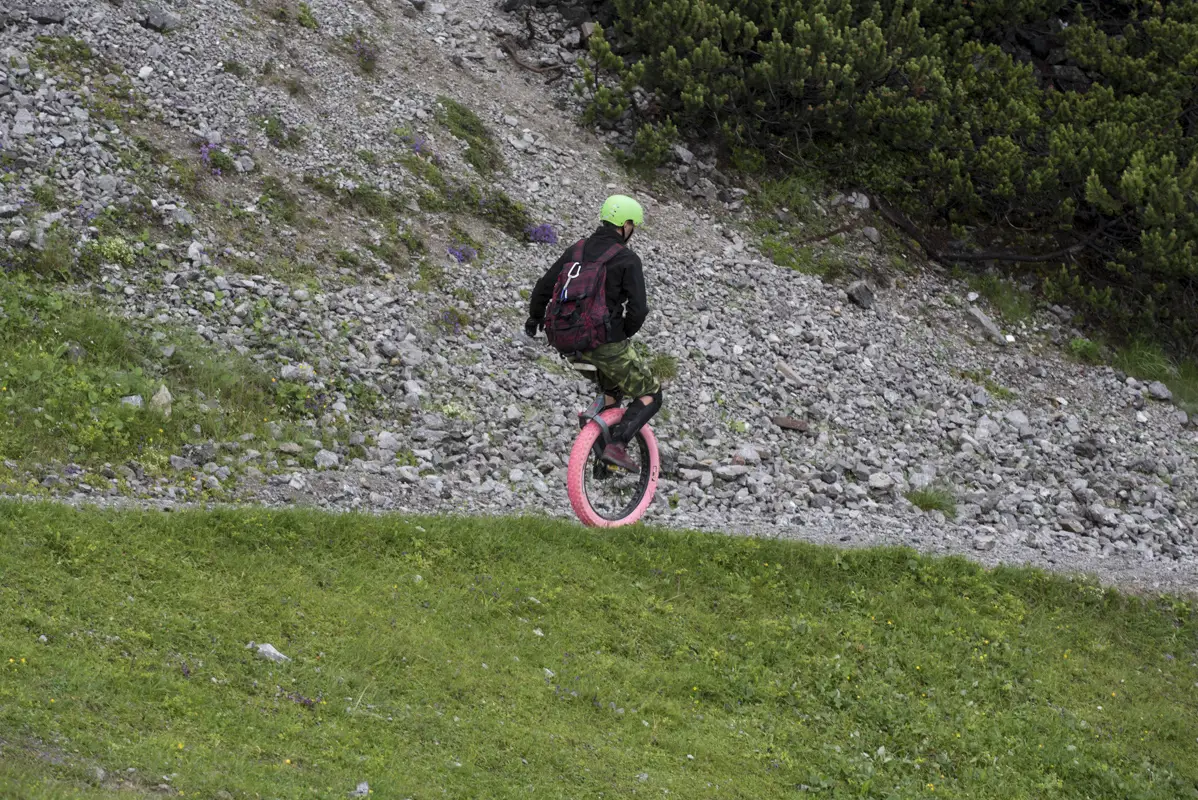

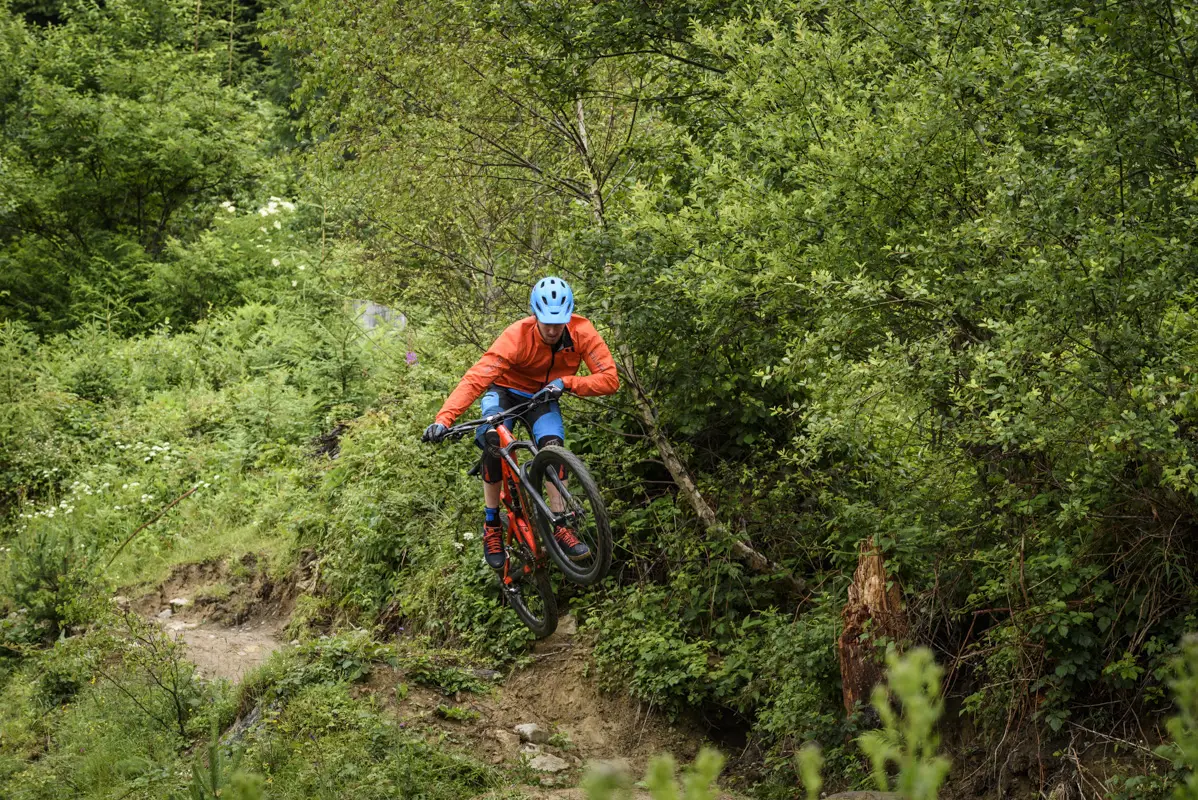
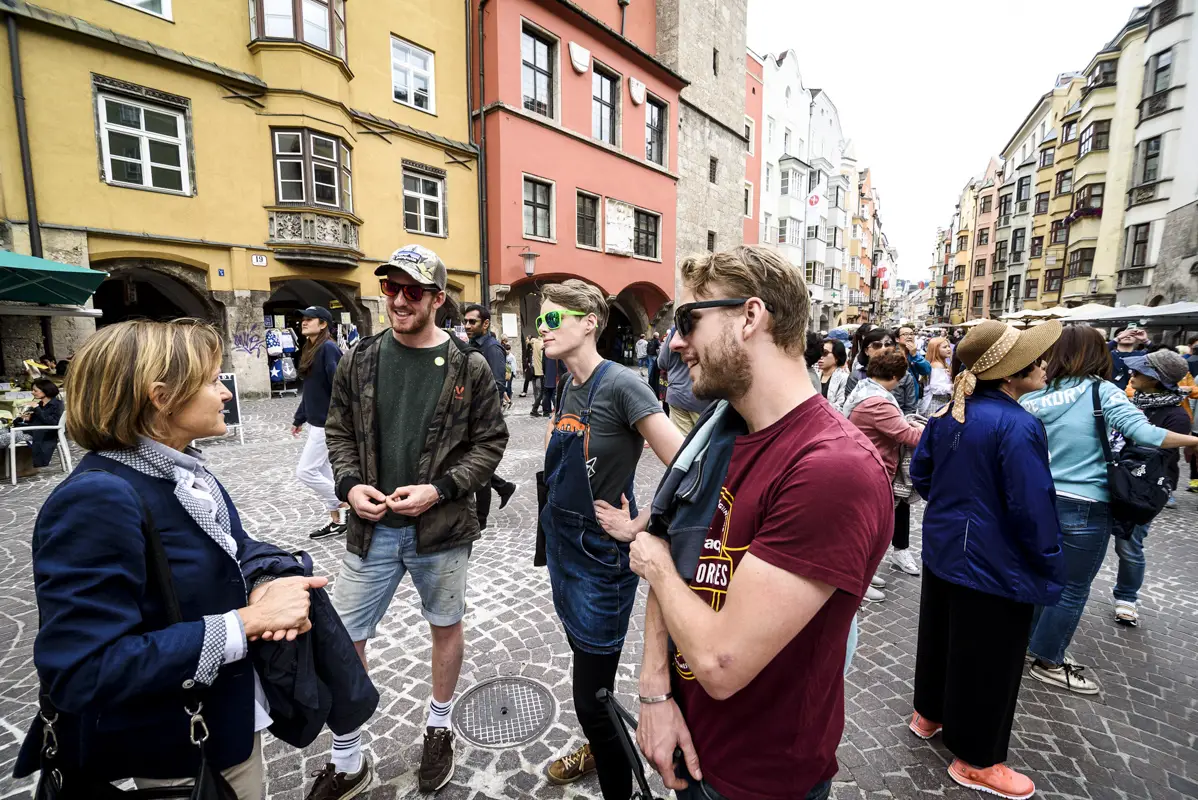


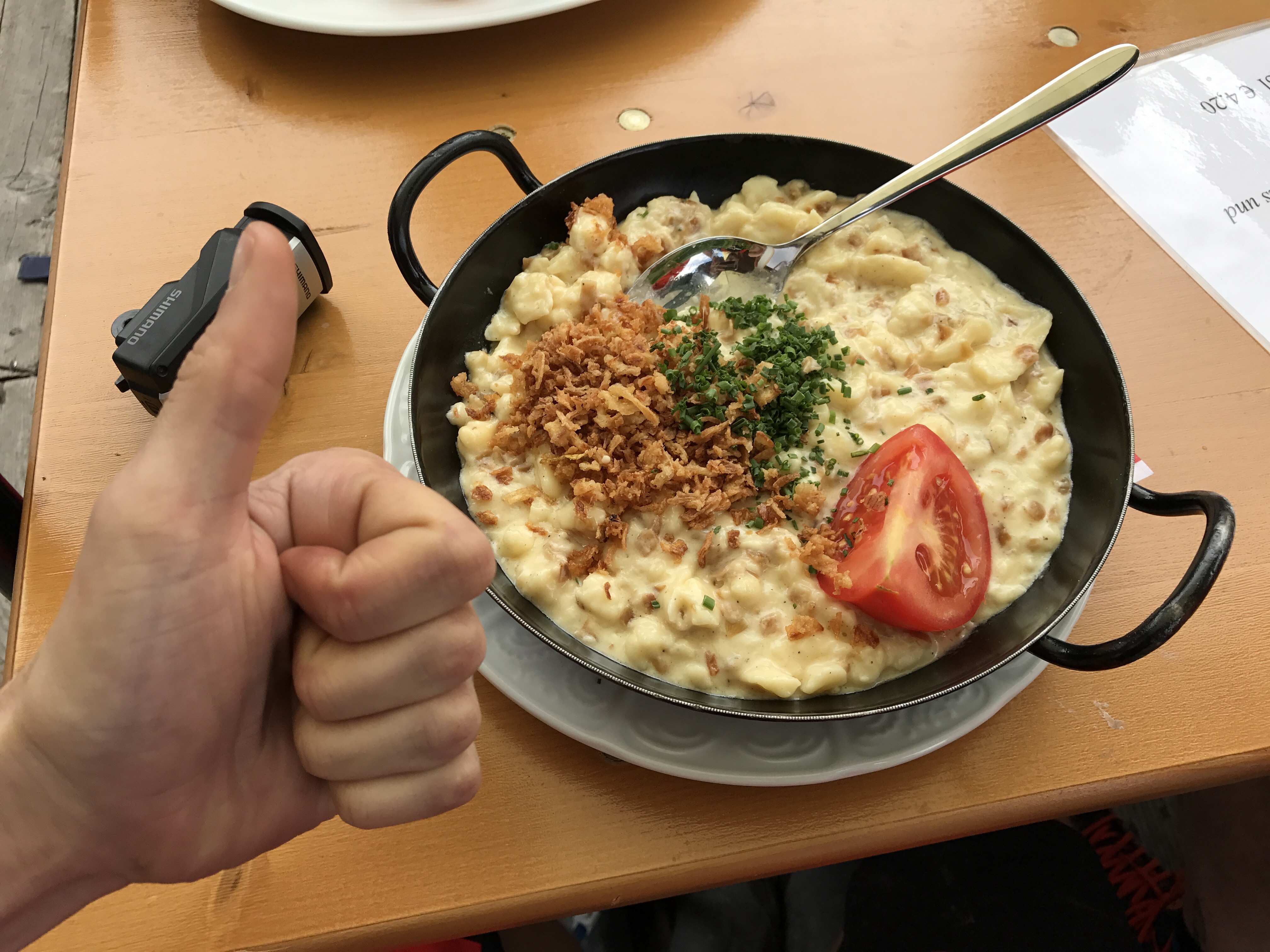
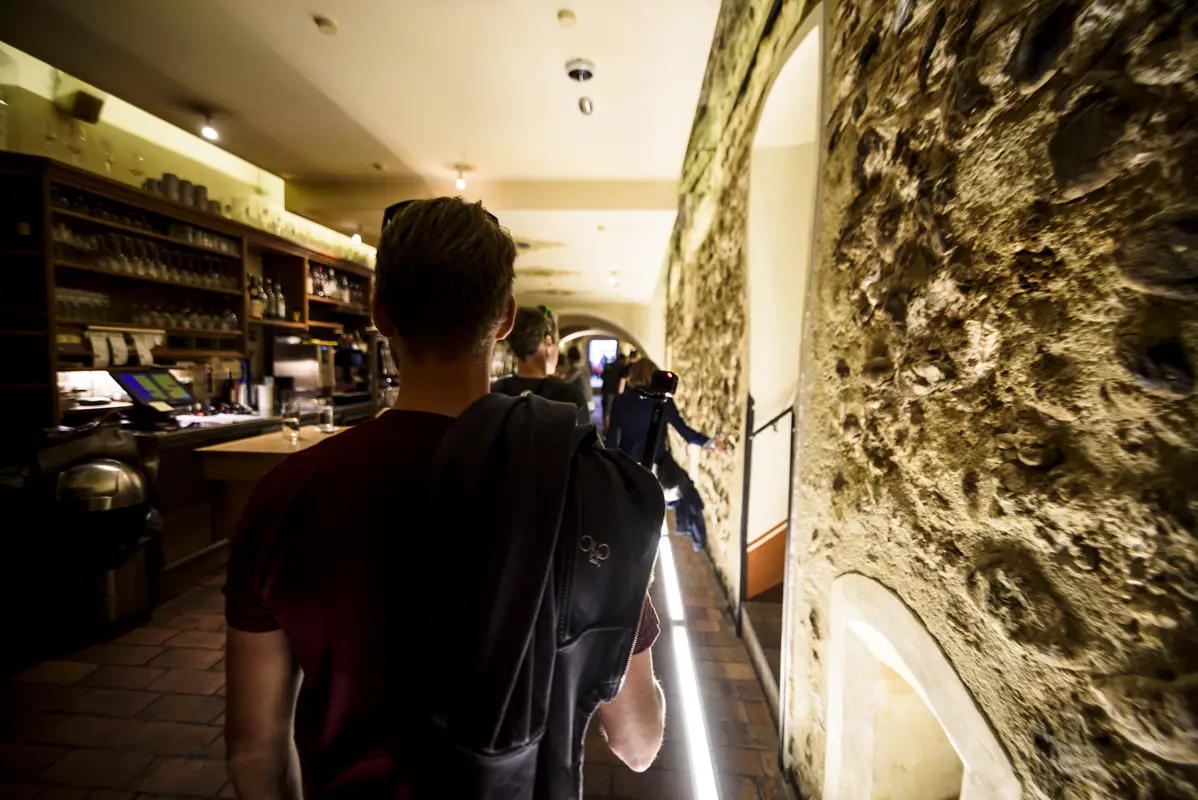
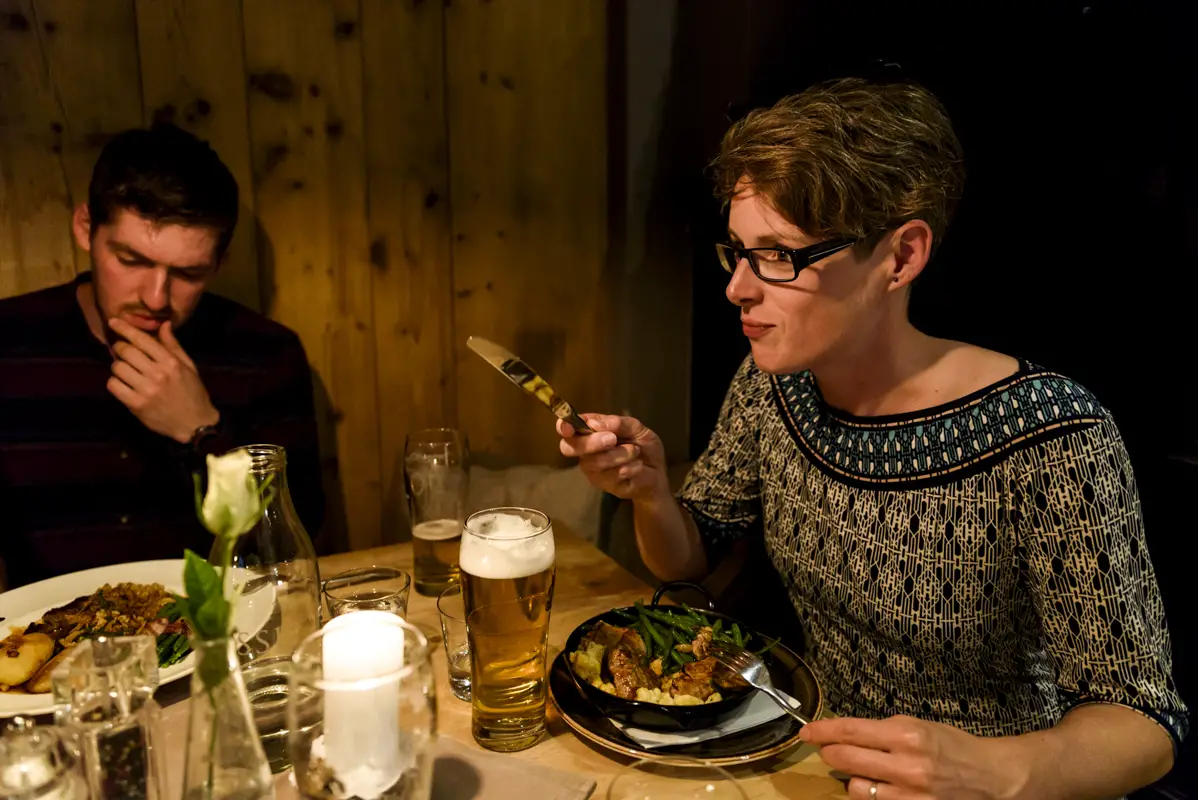
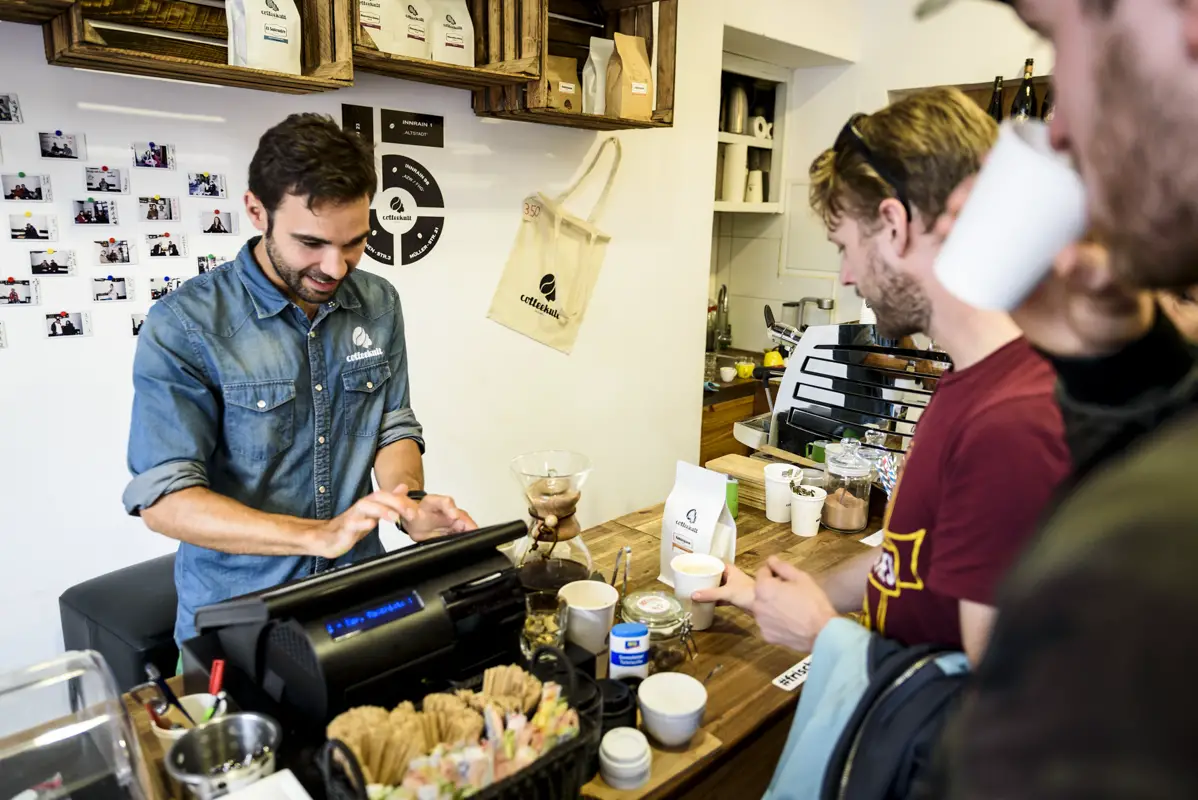
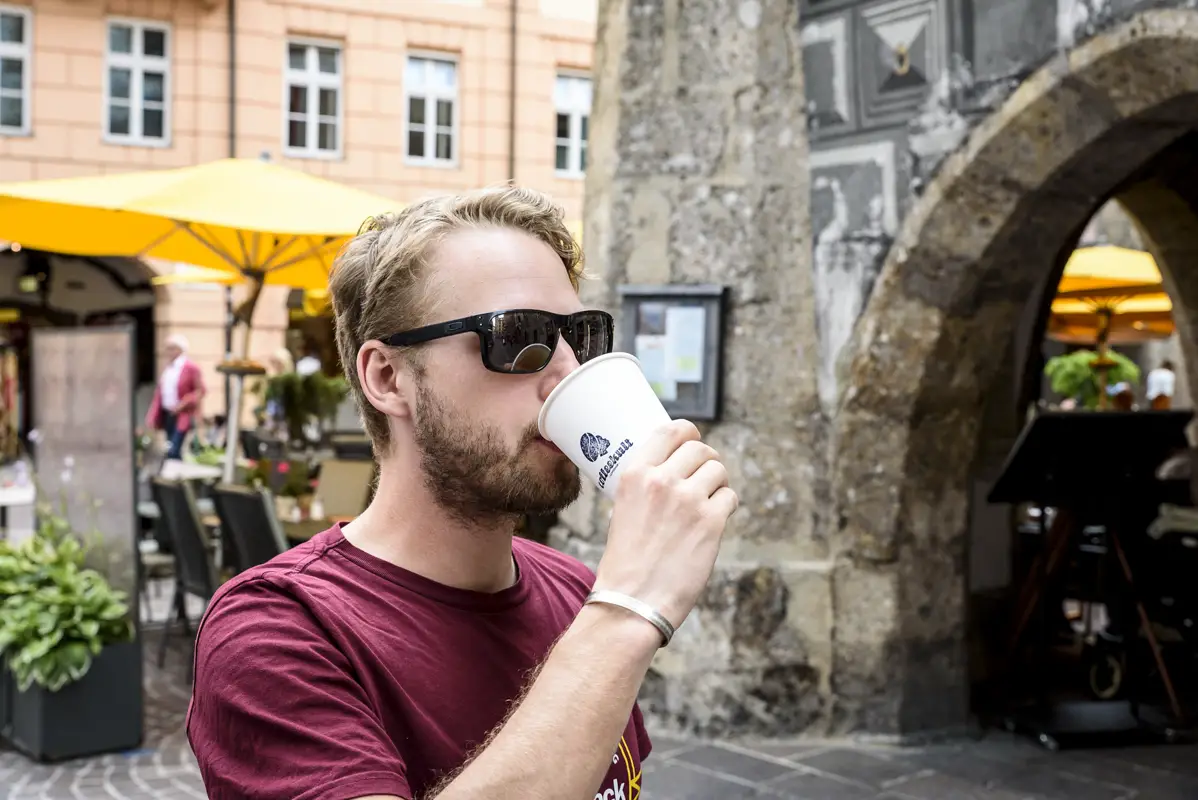
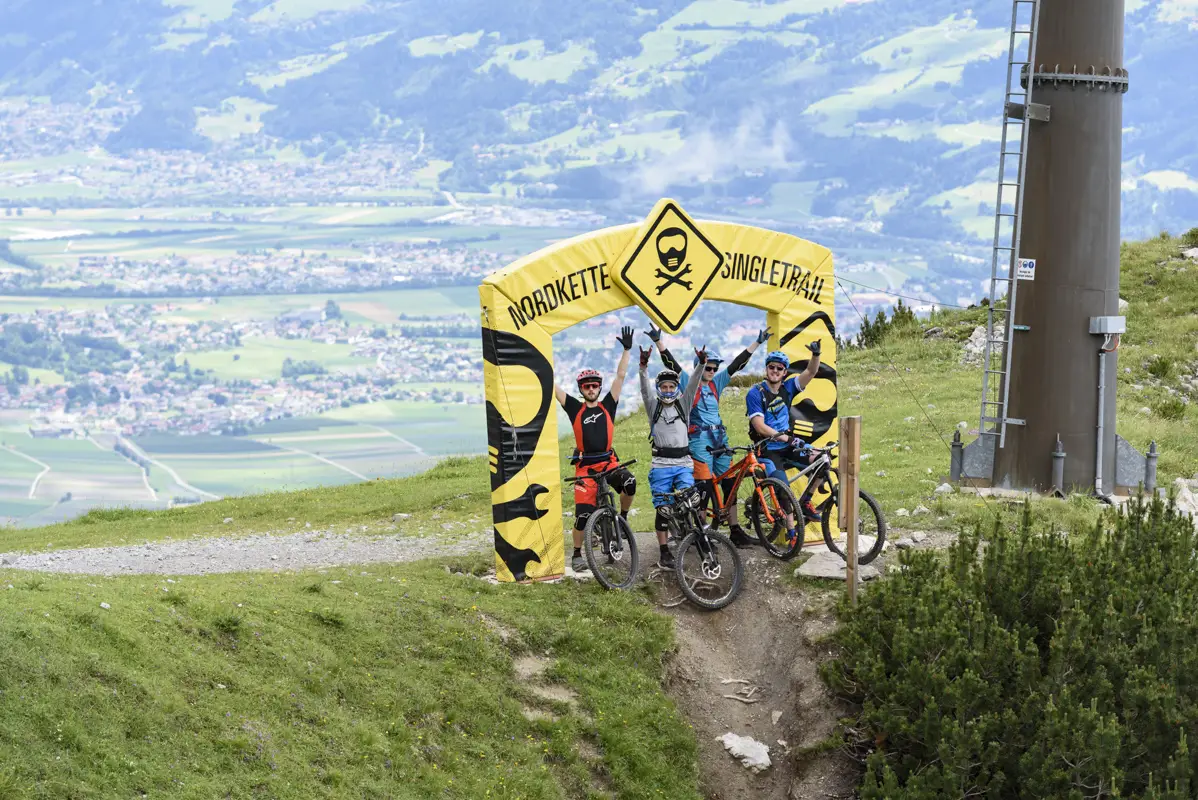

Gah! Been up the valley all week in Seefeld and it’s all gravel tracks!